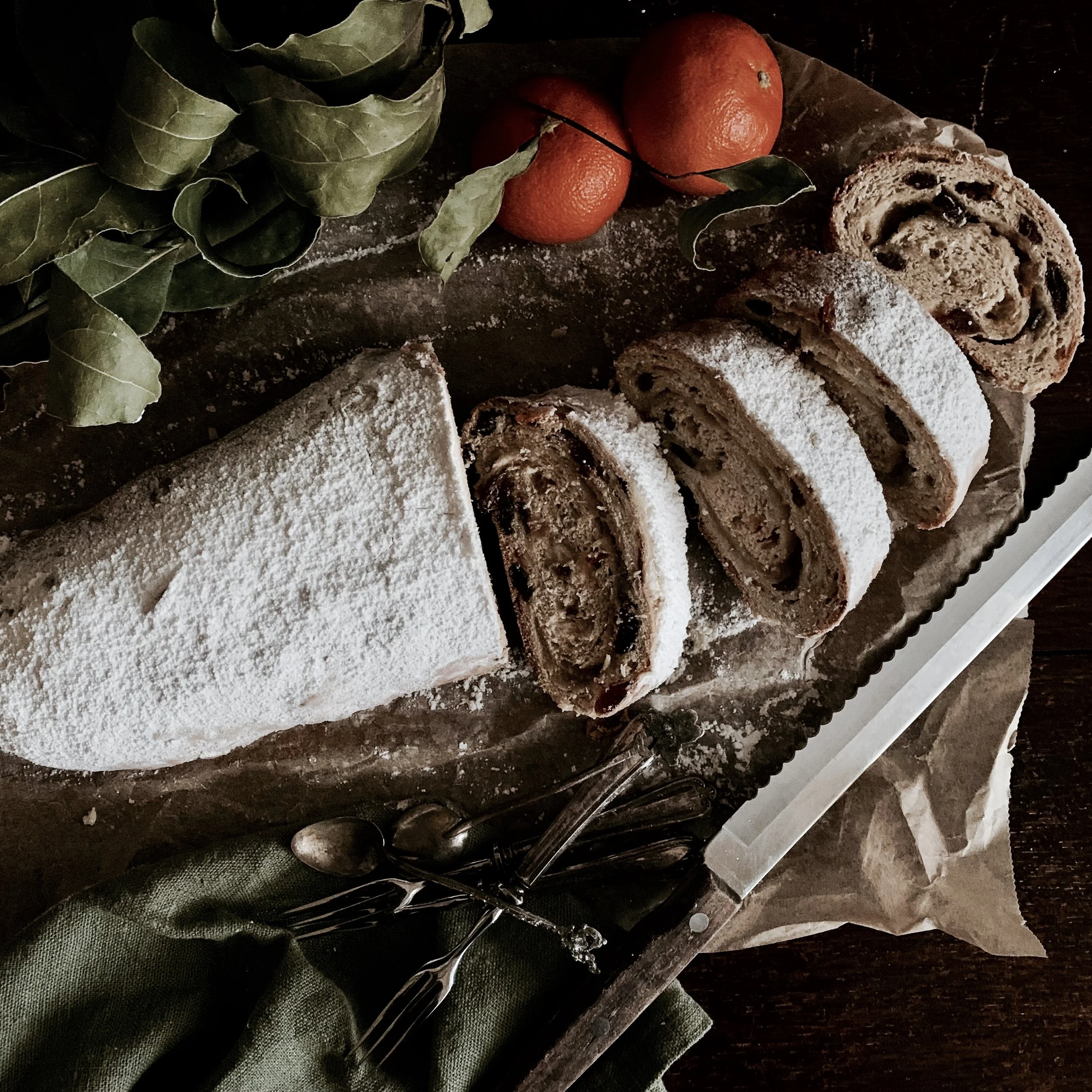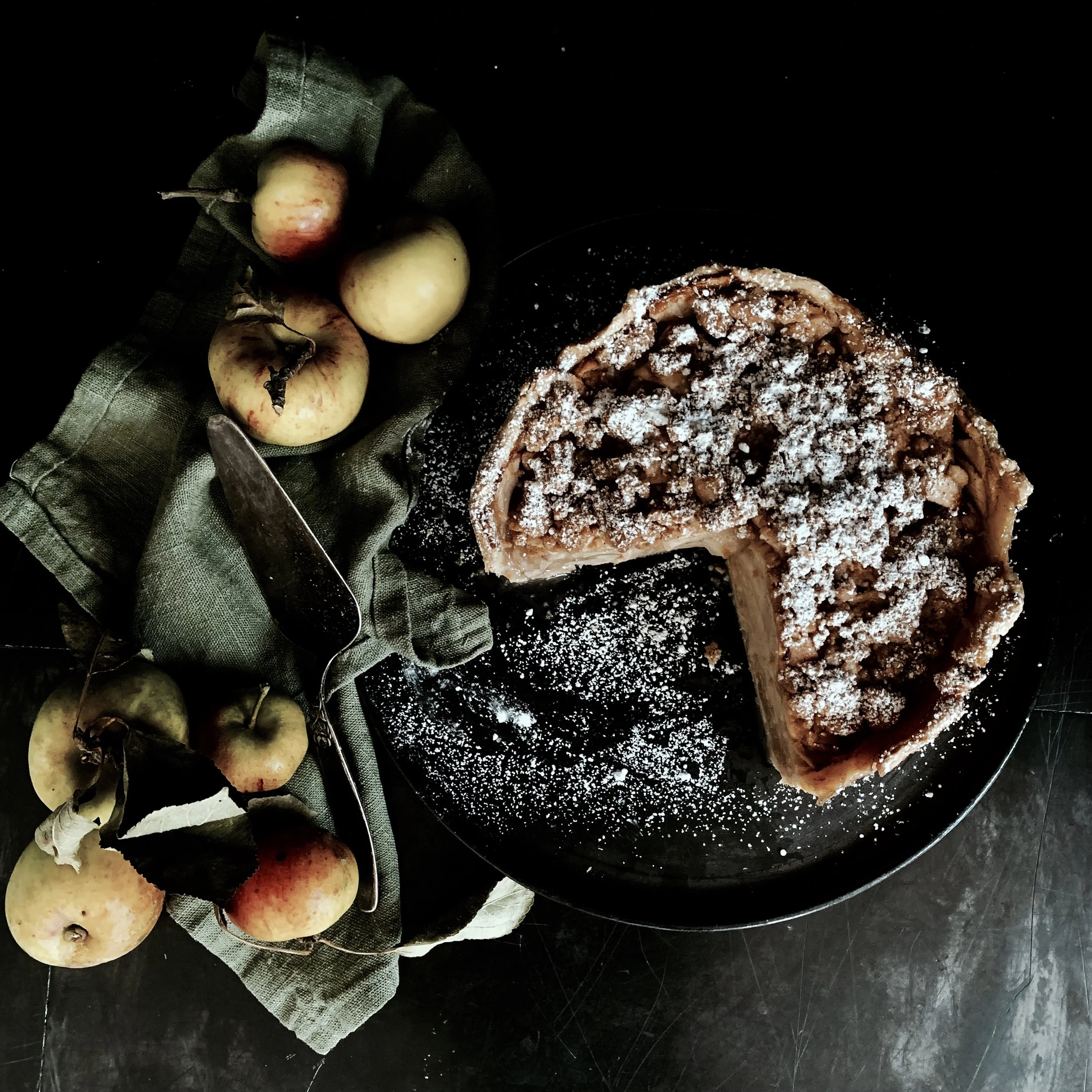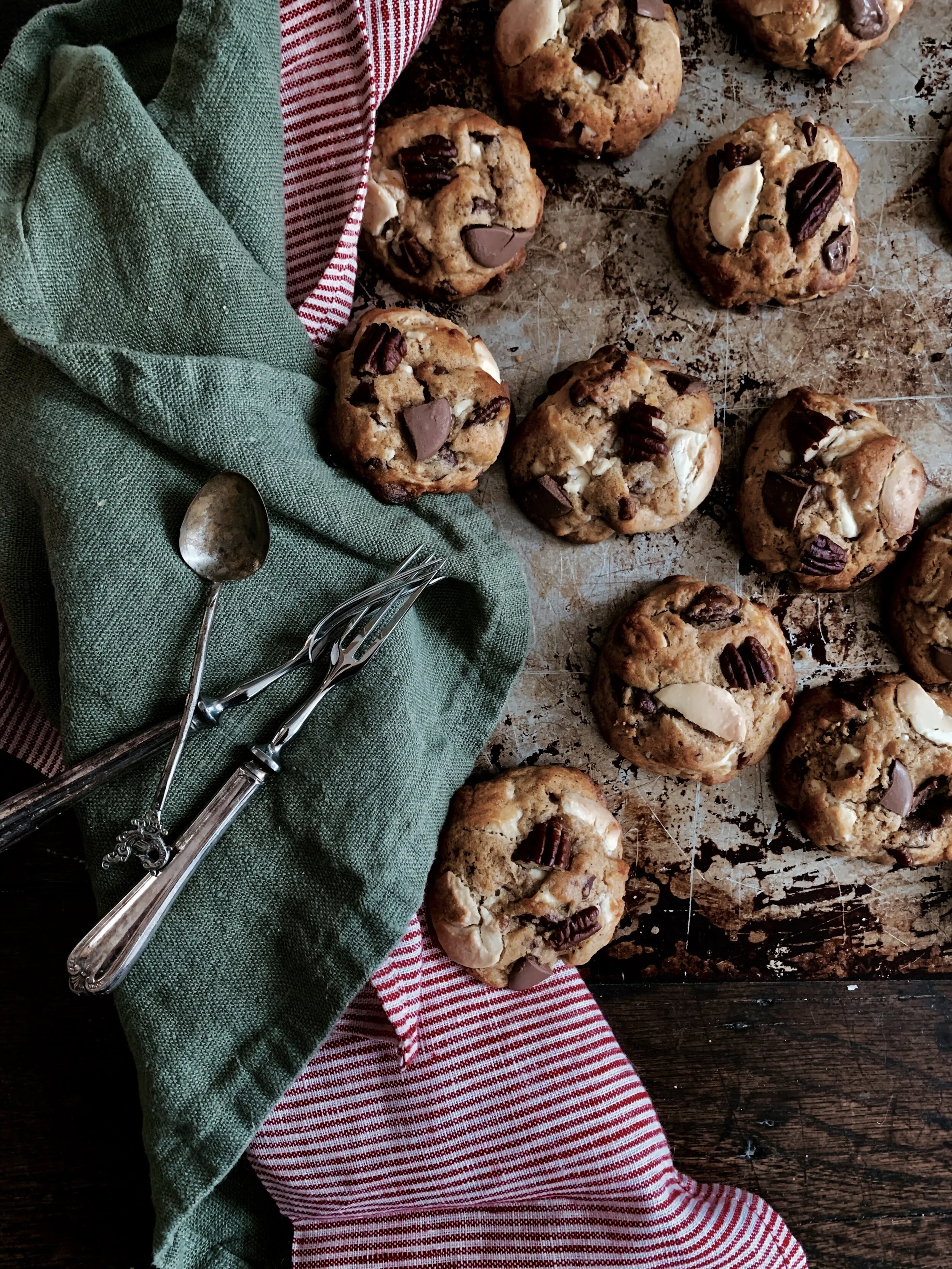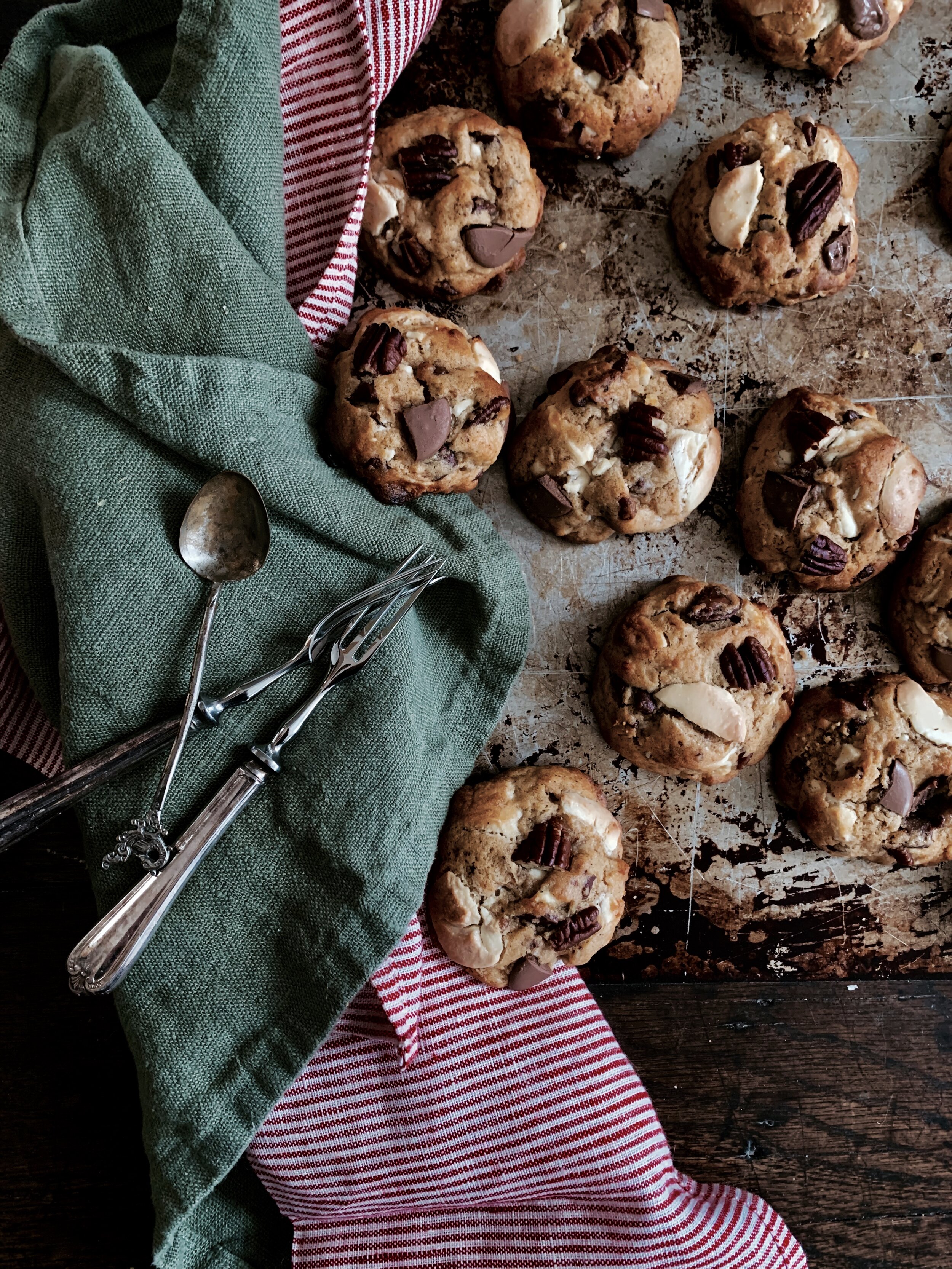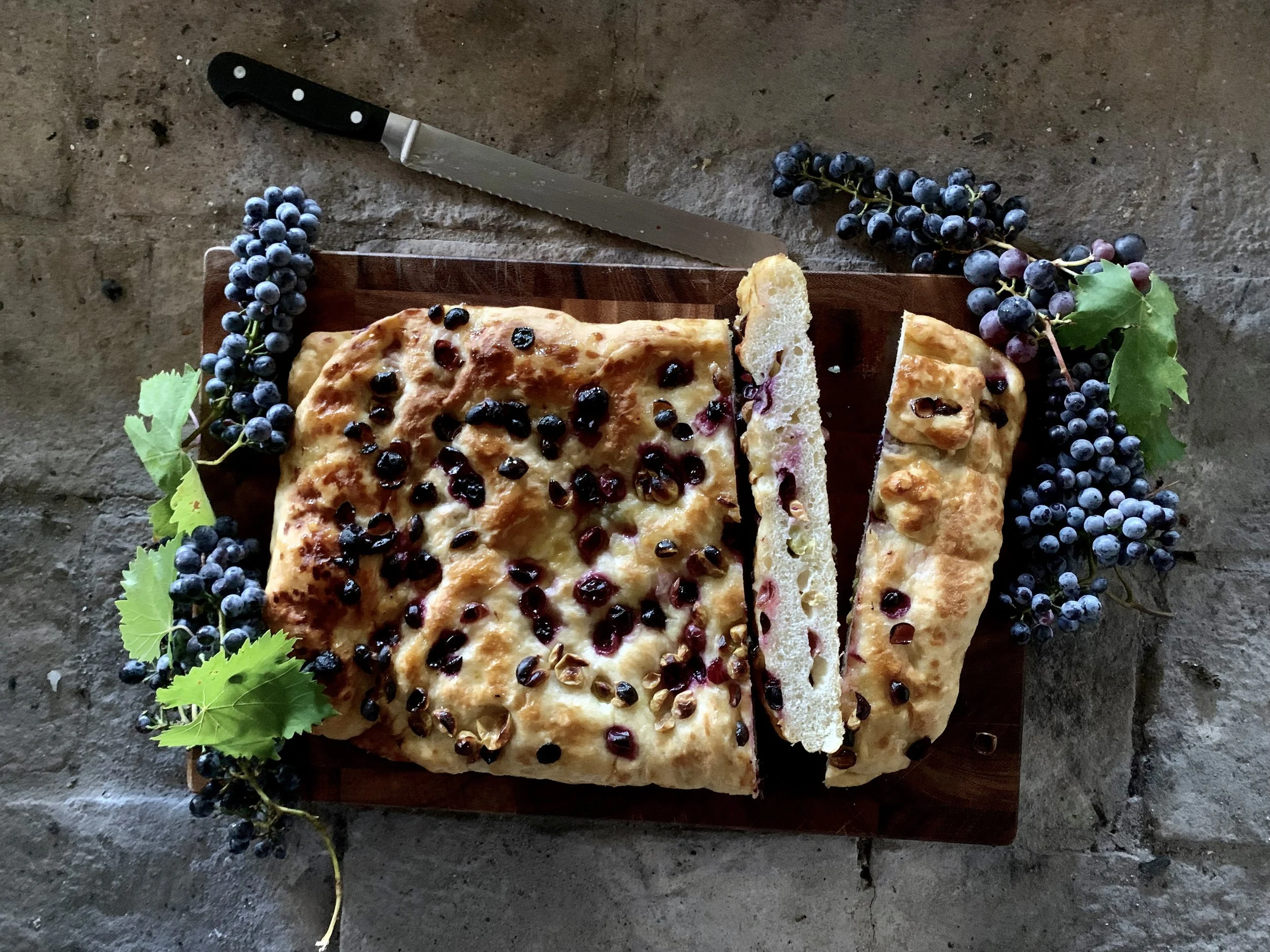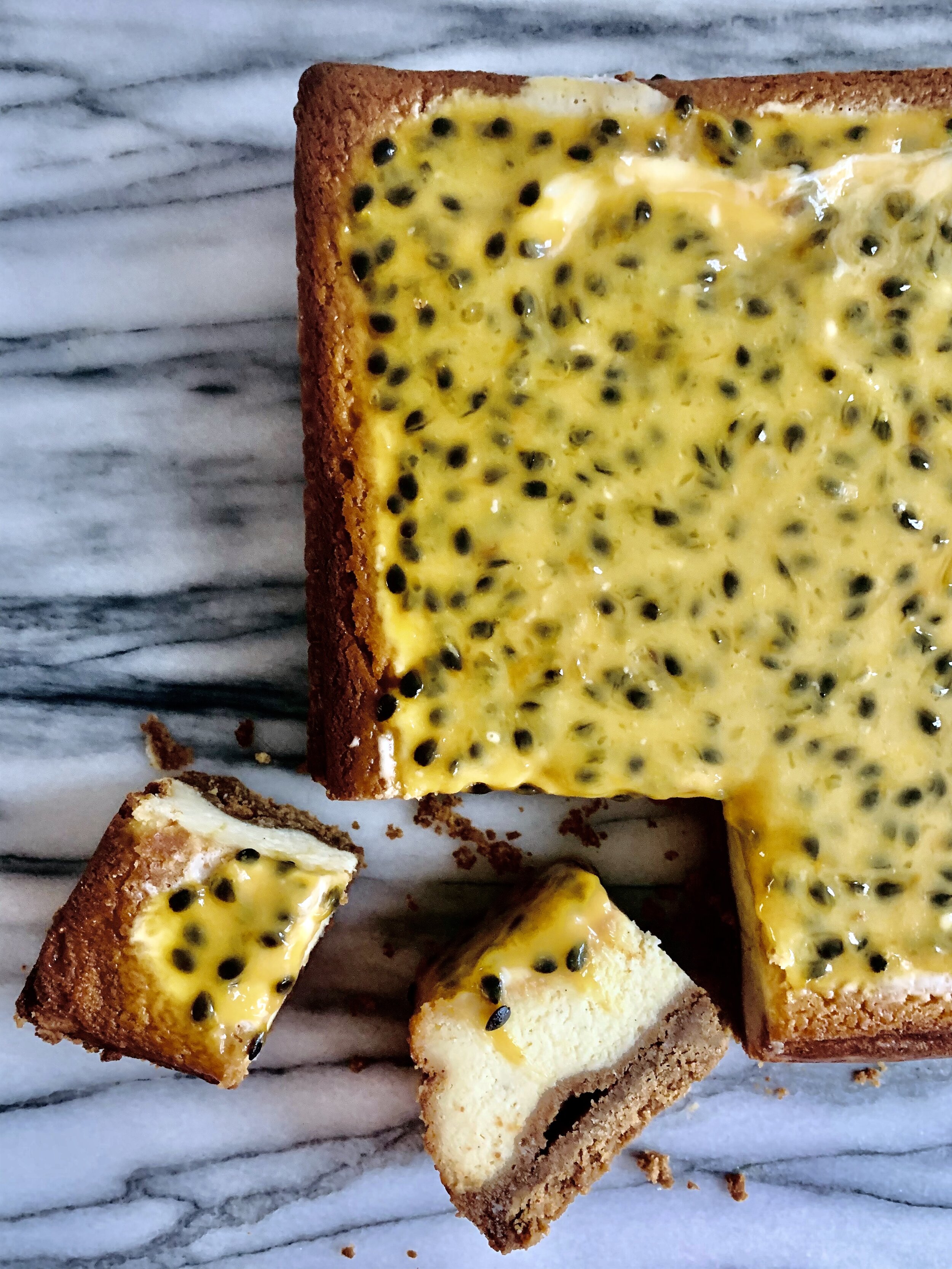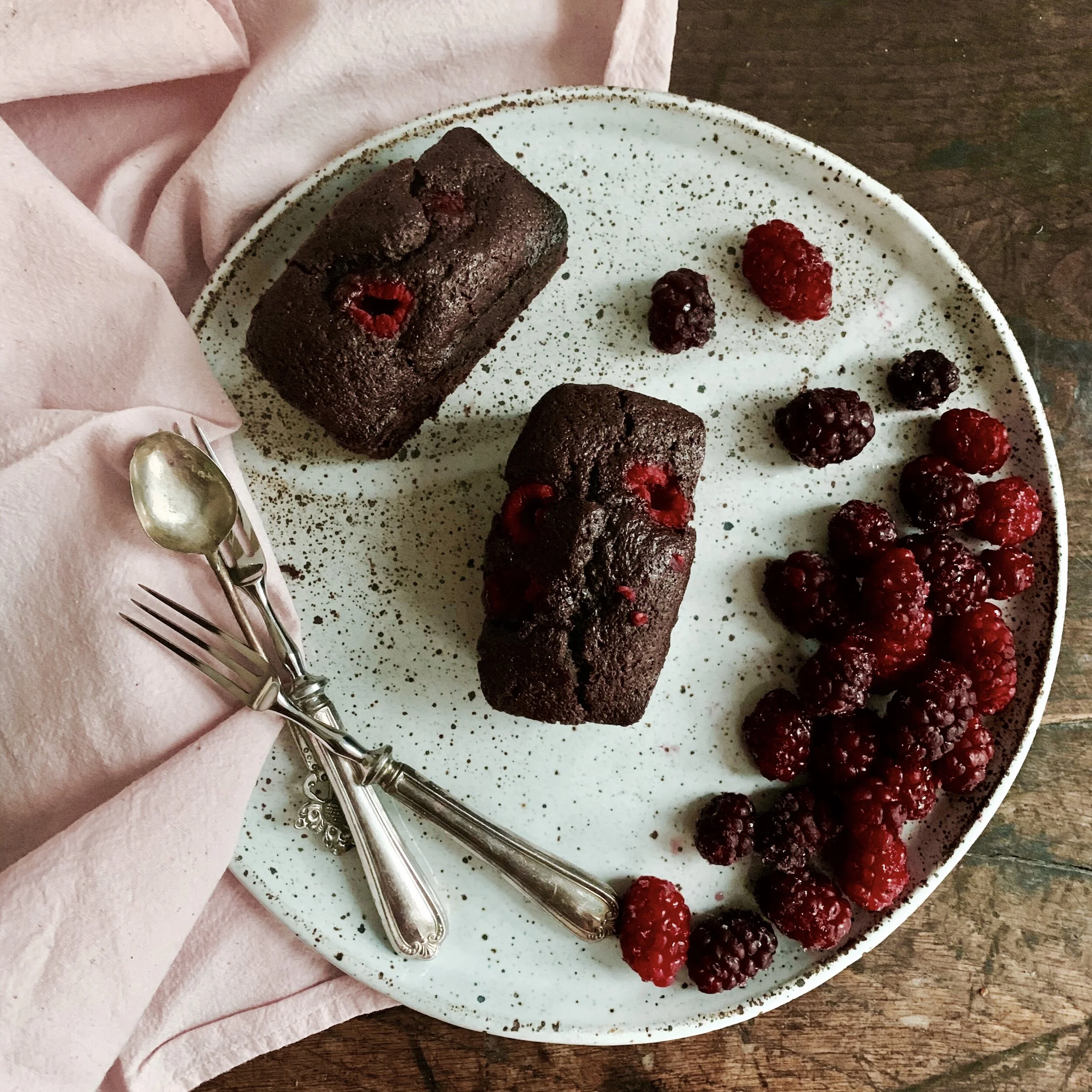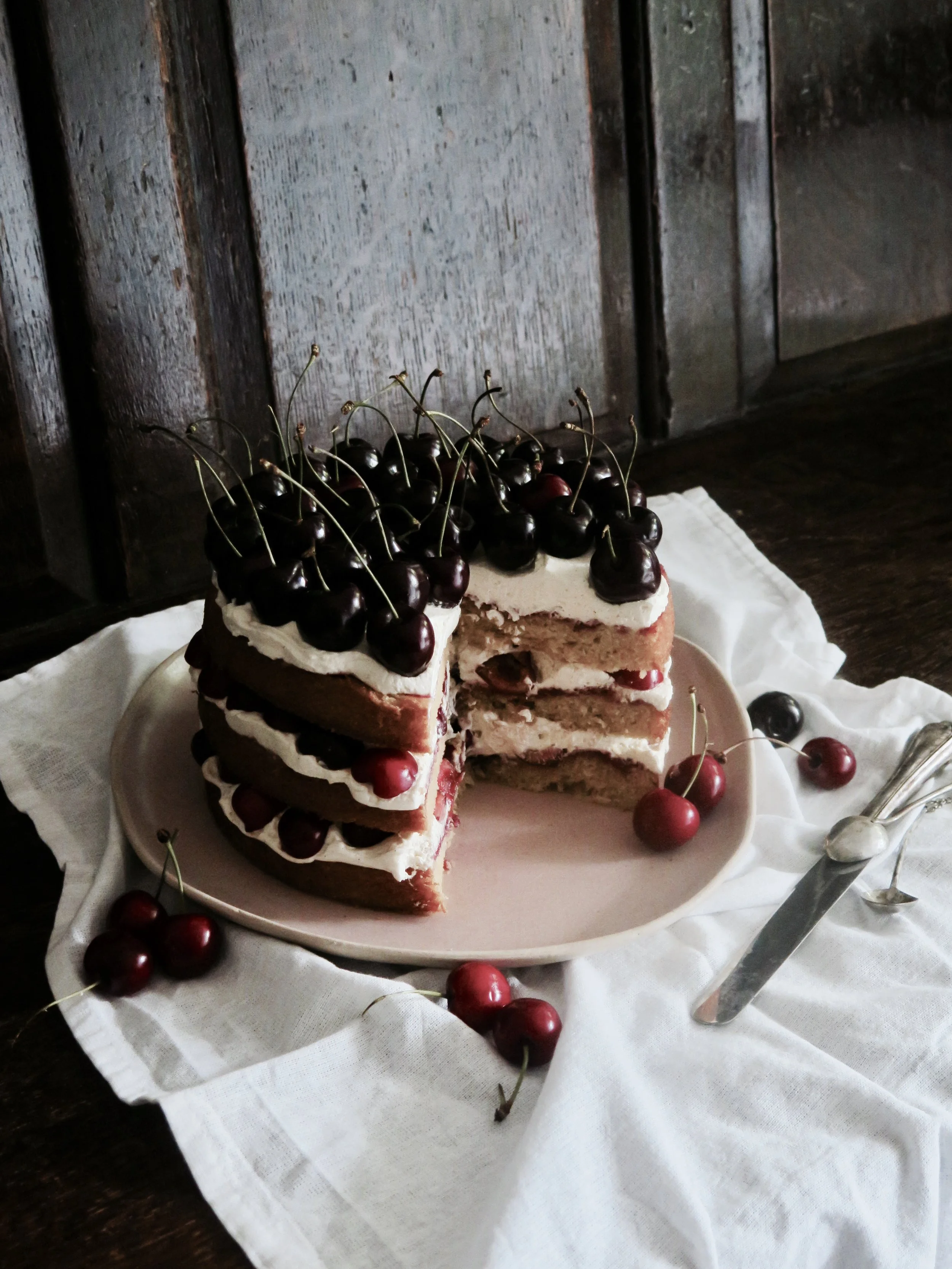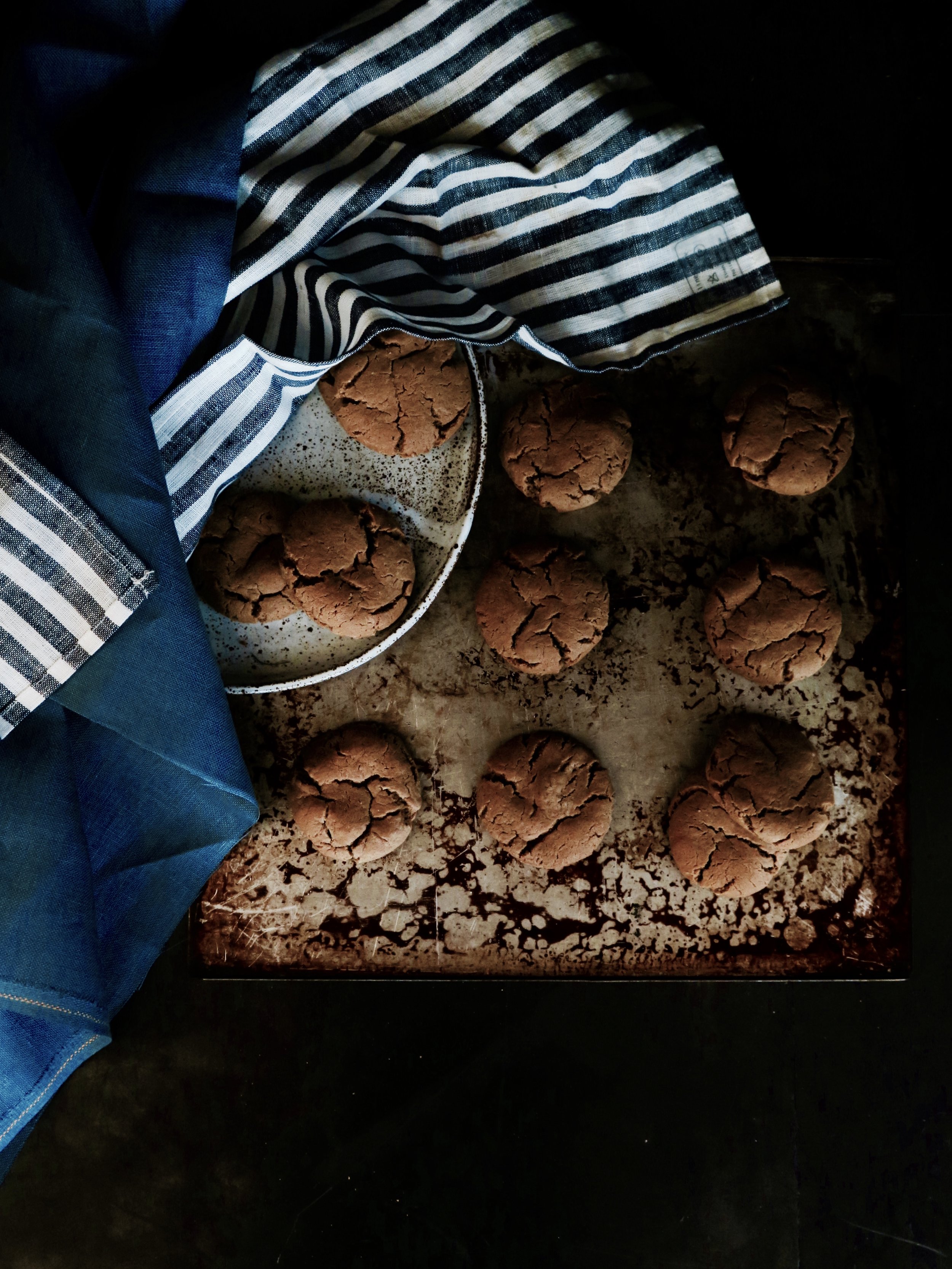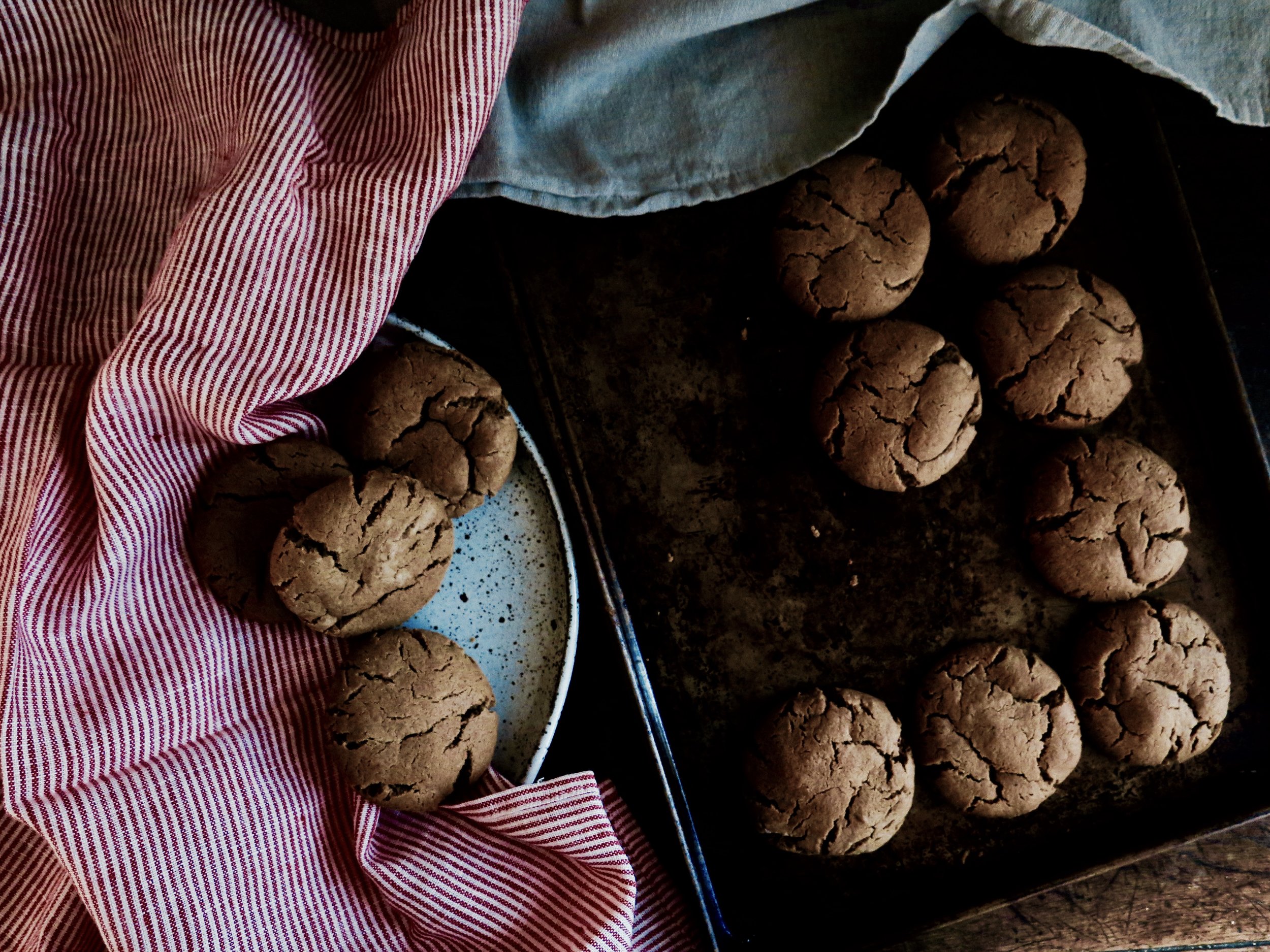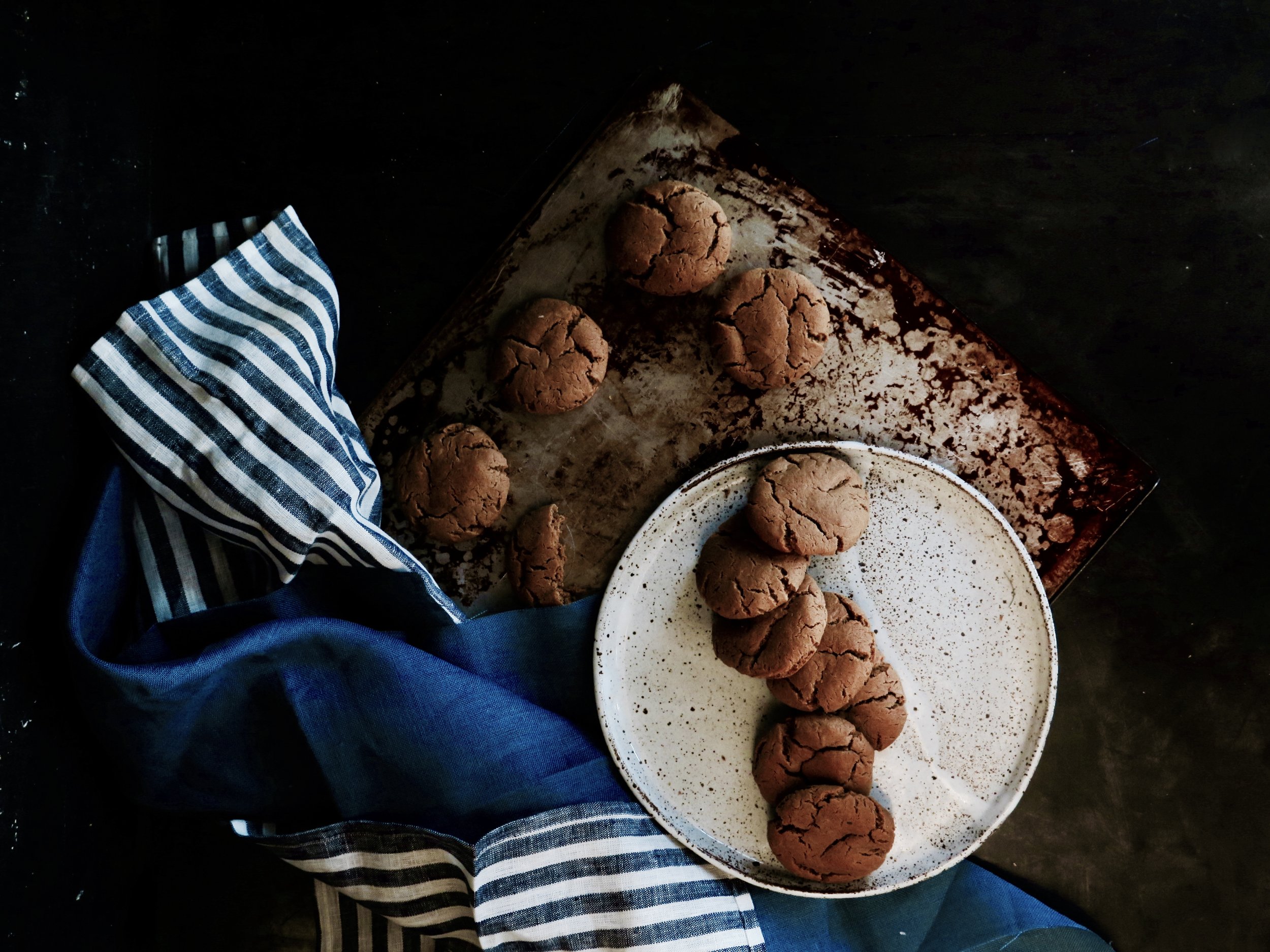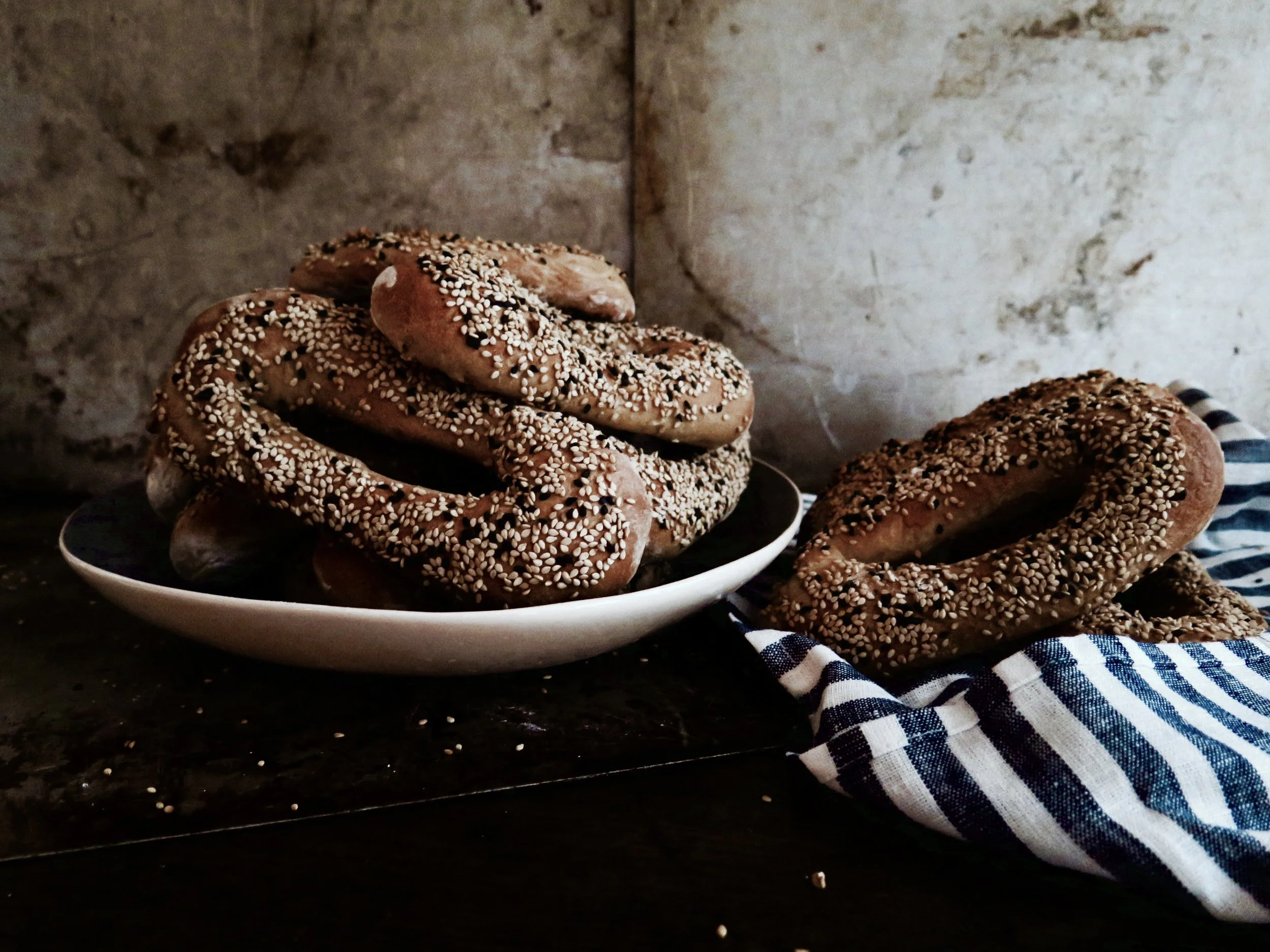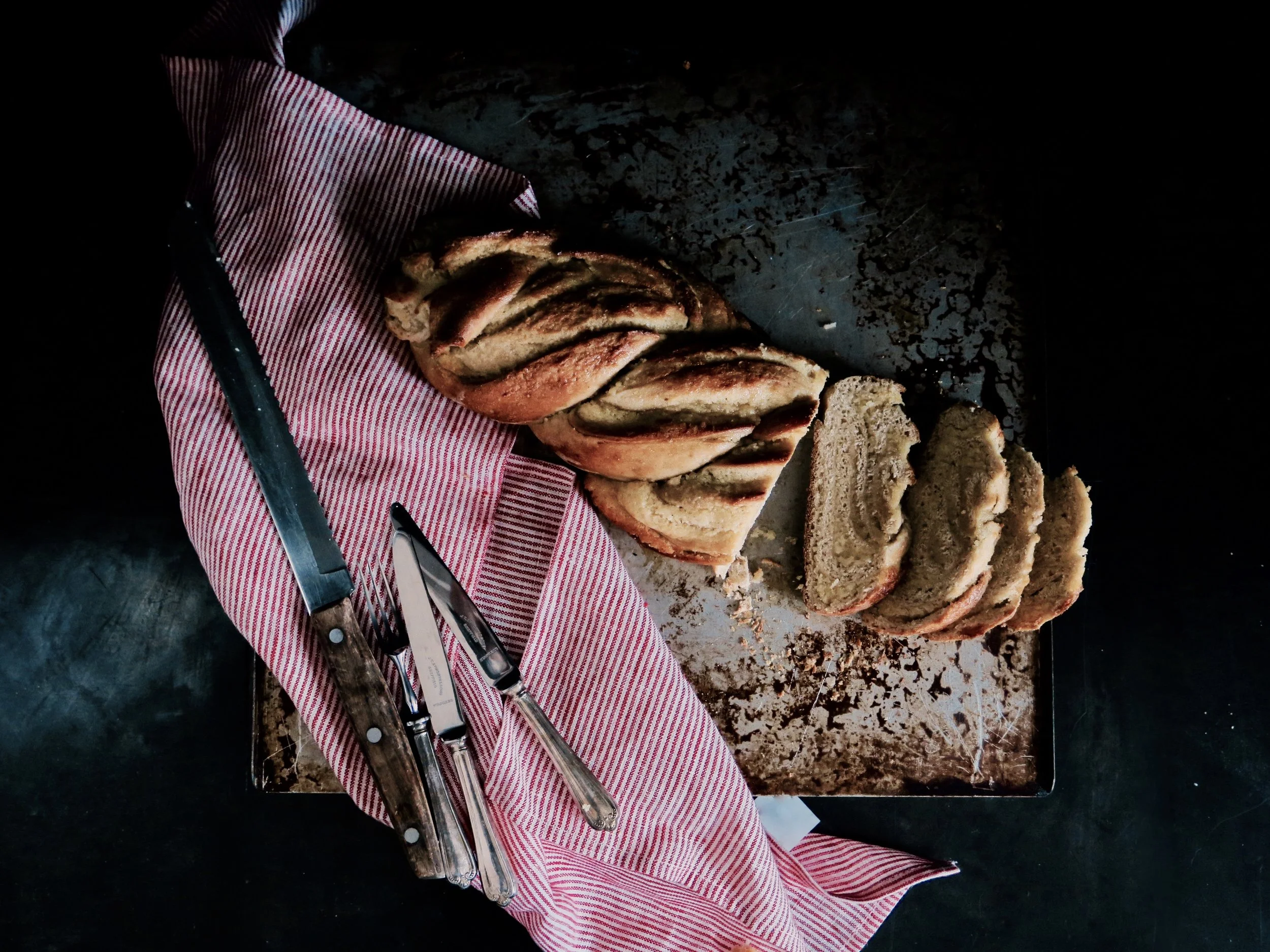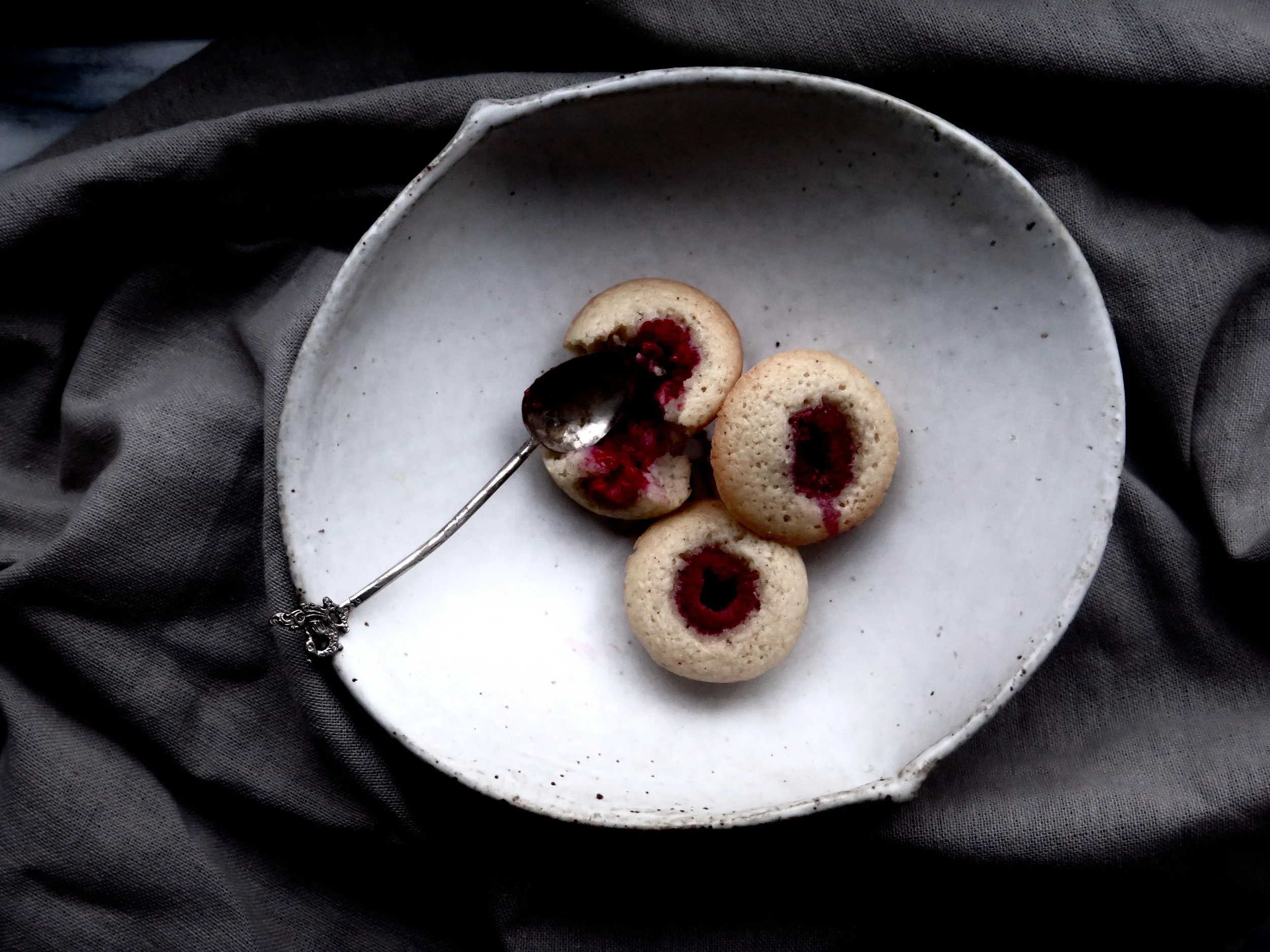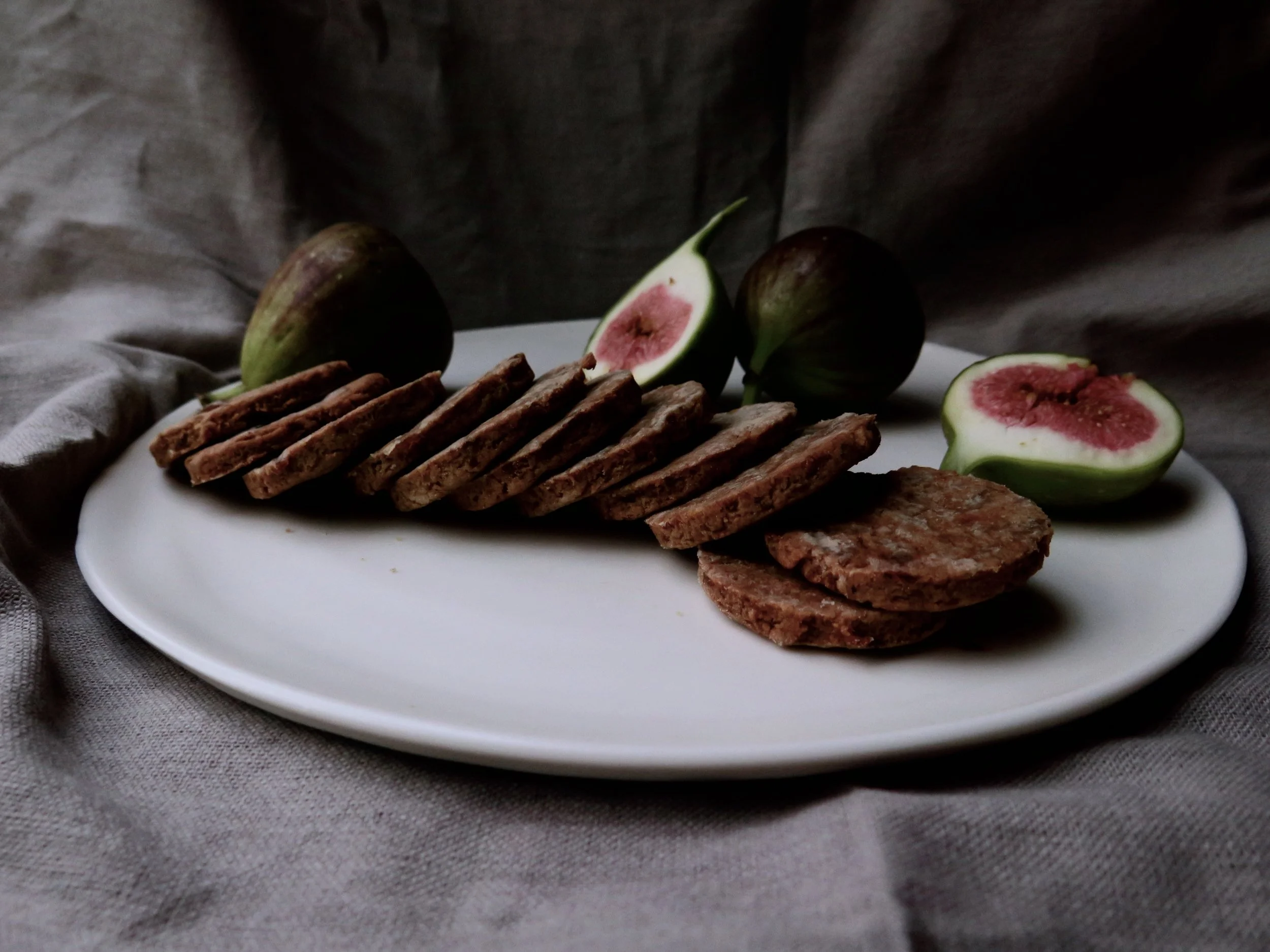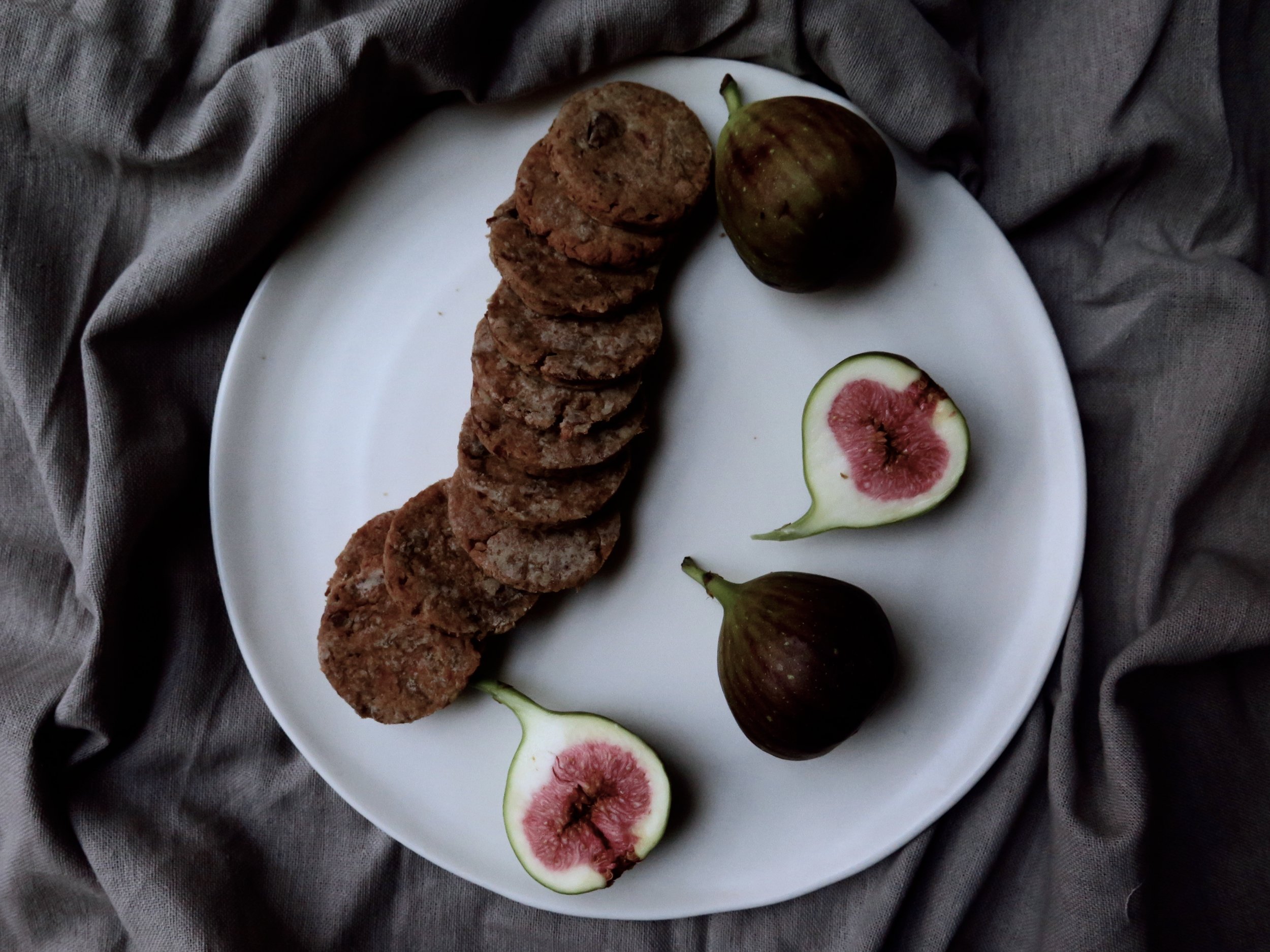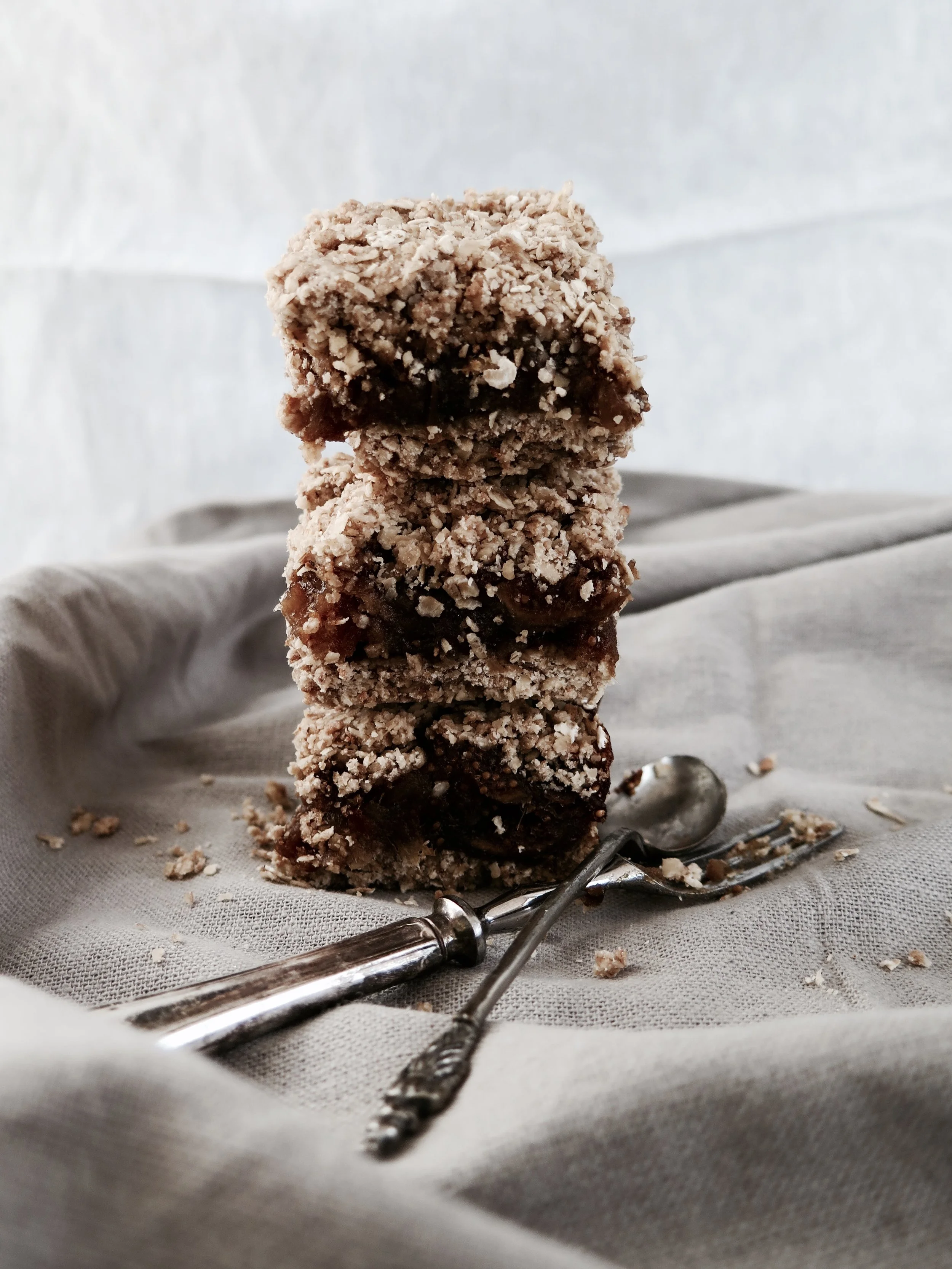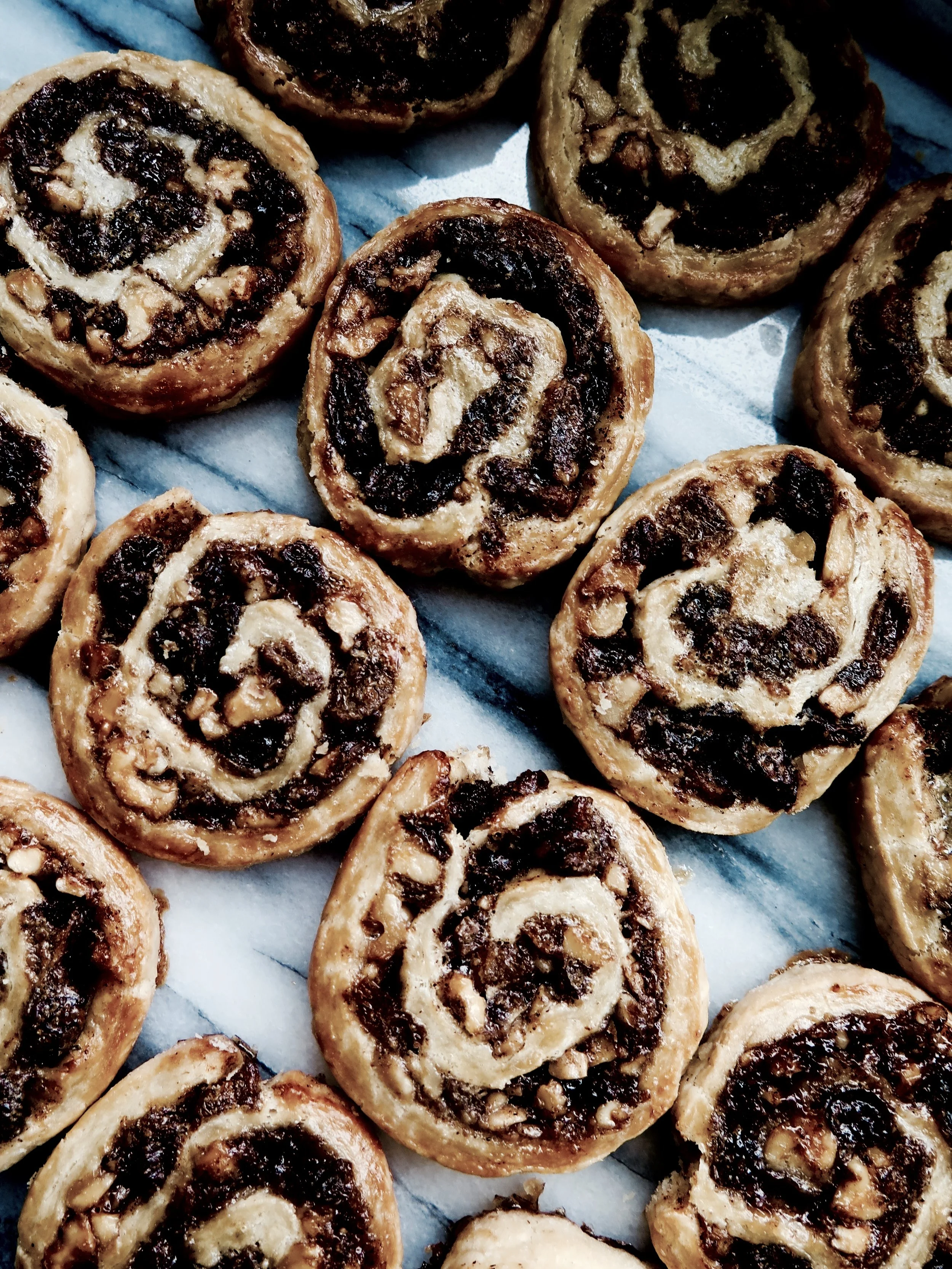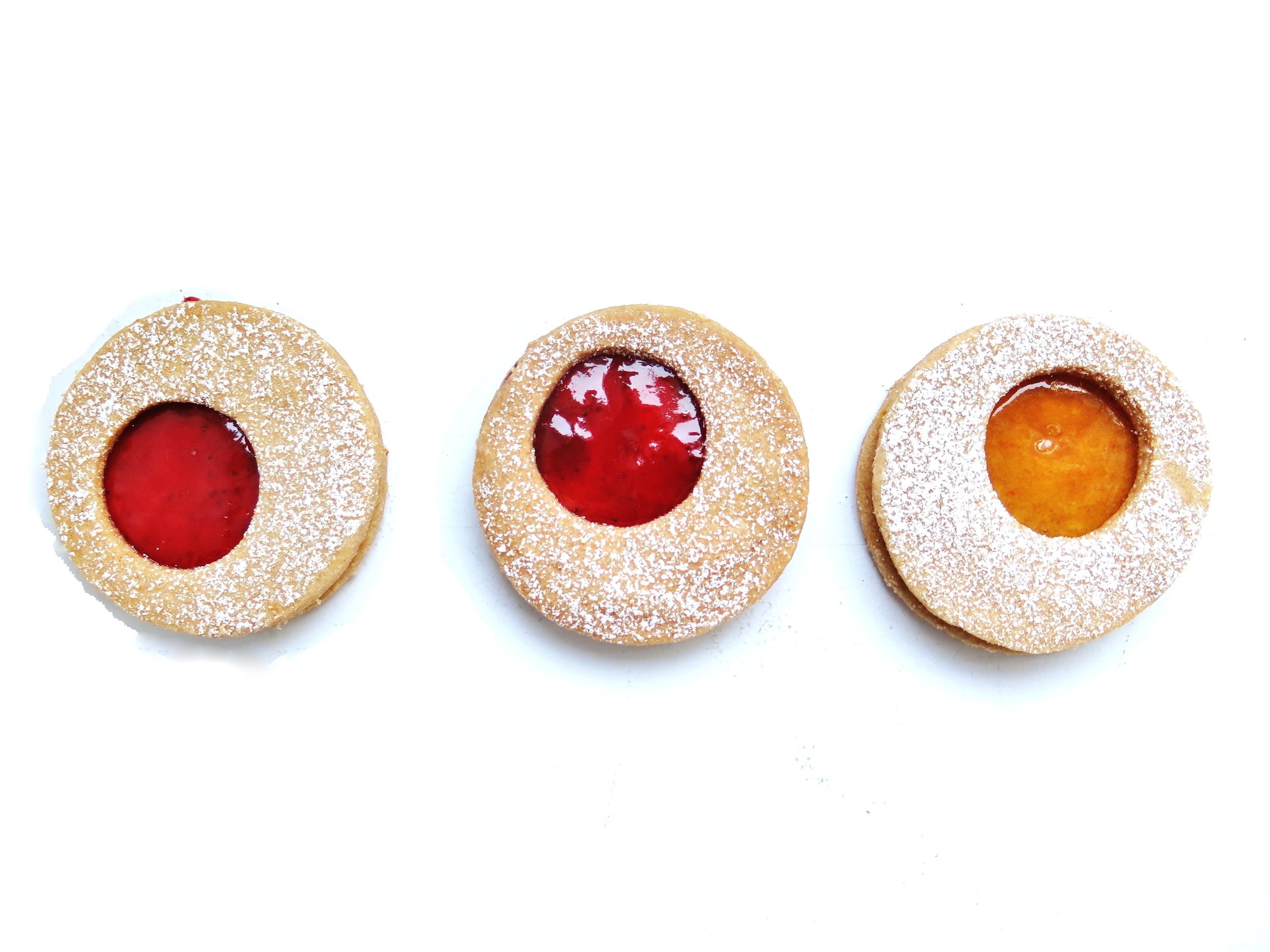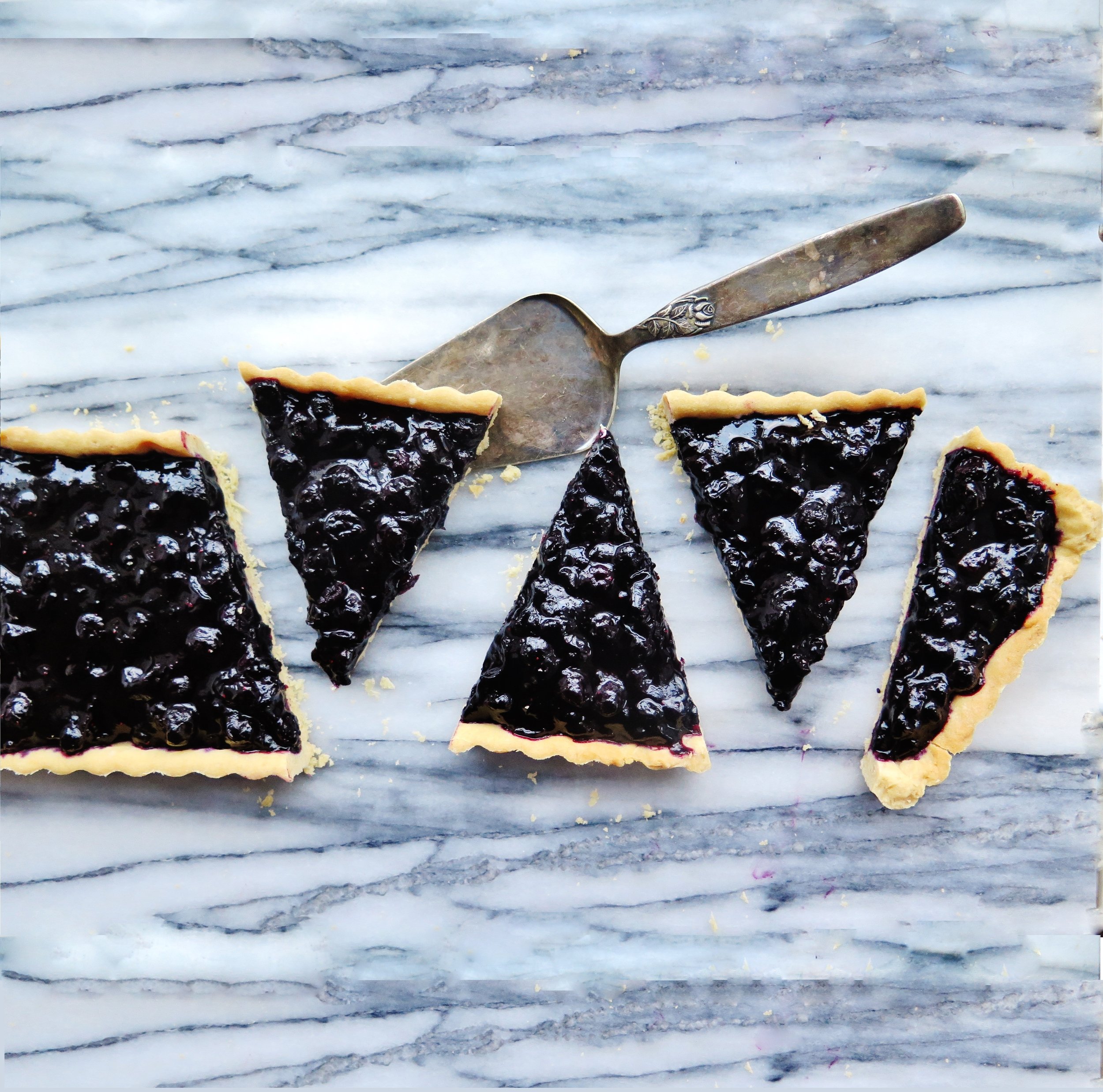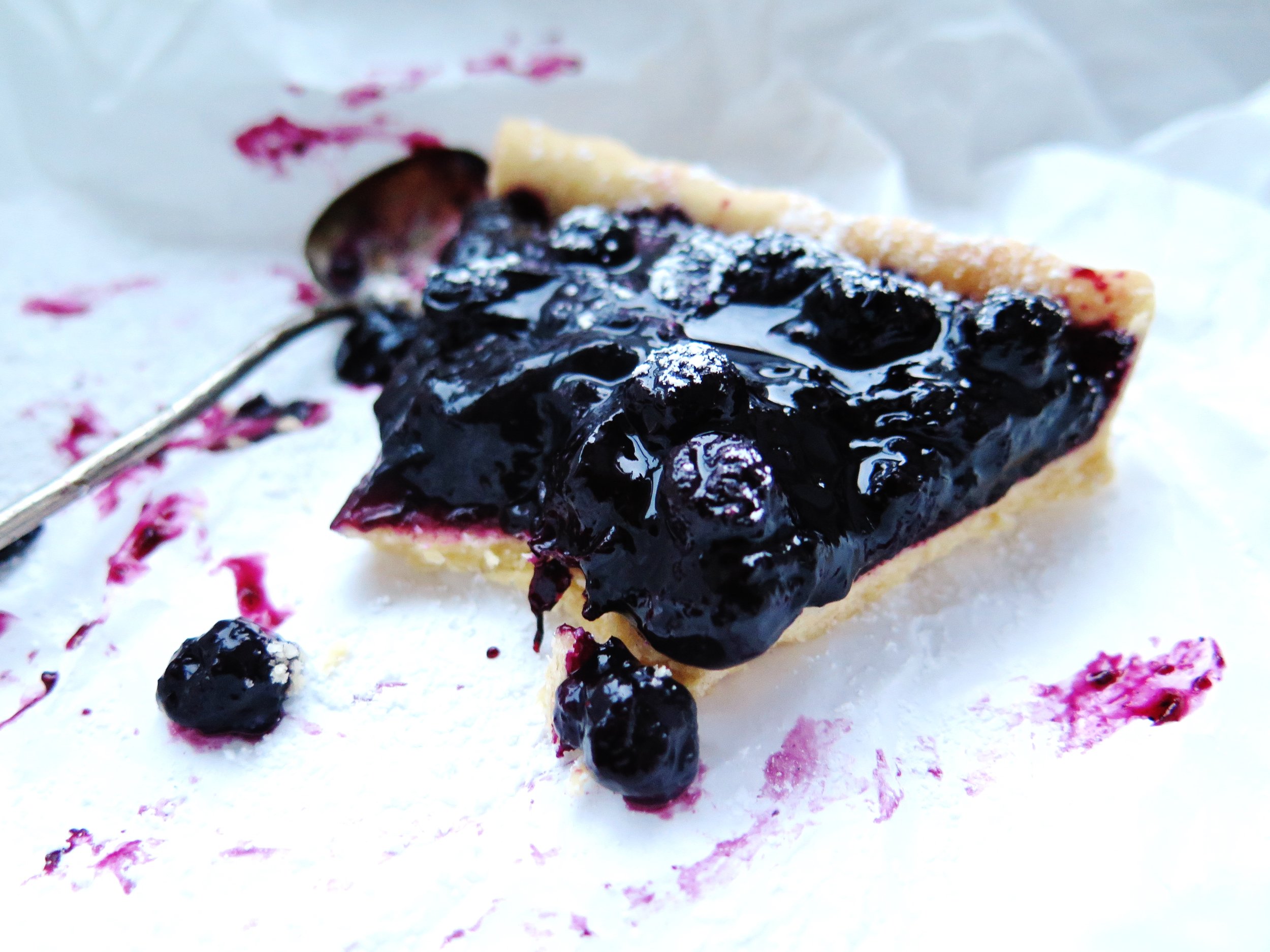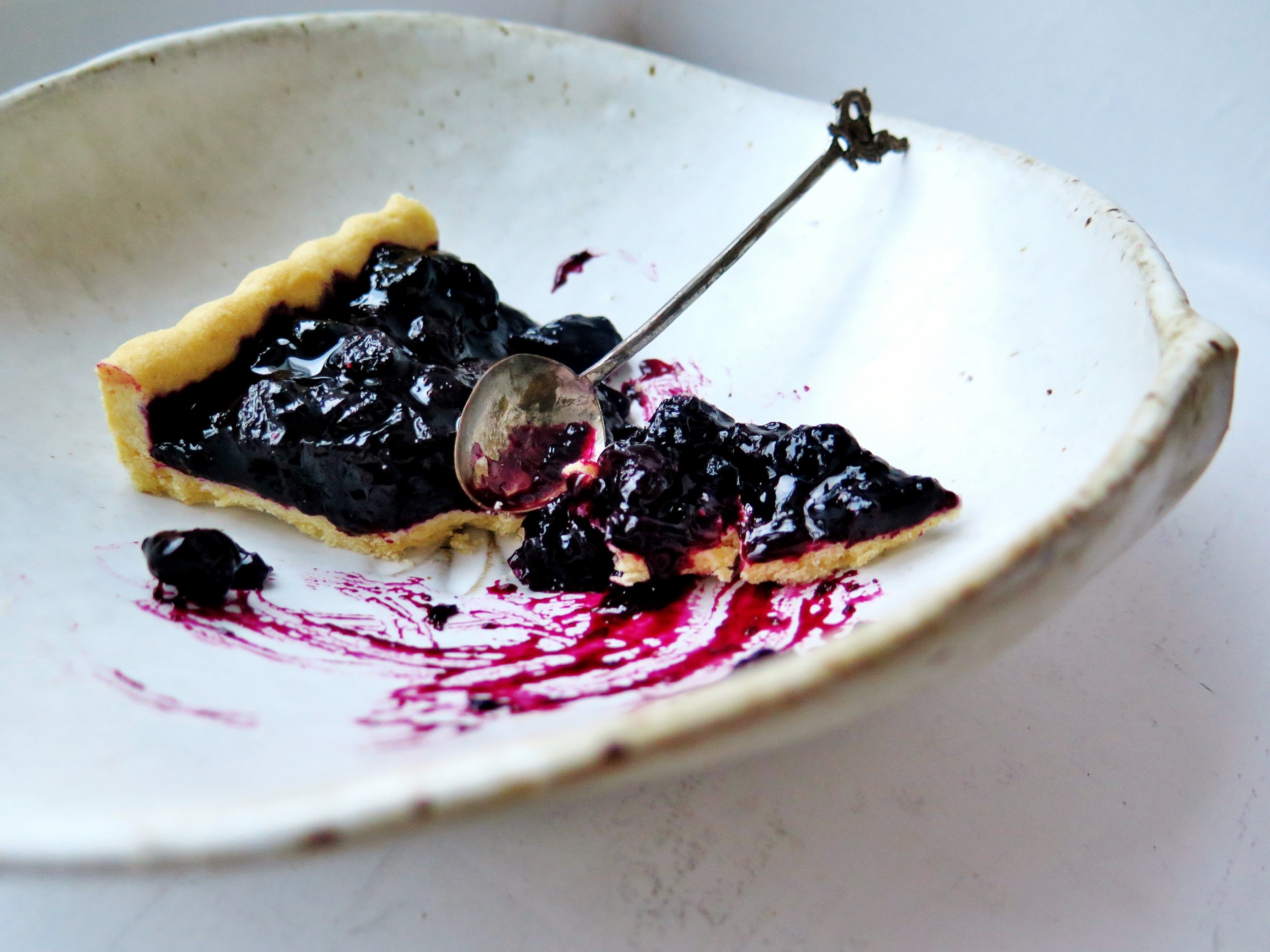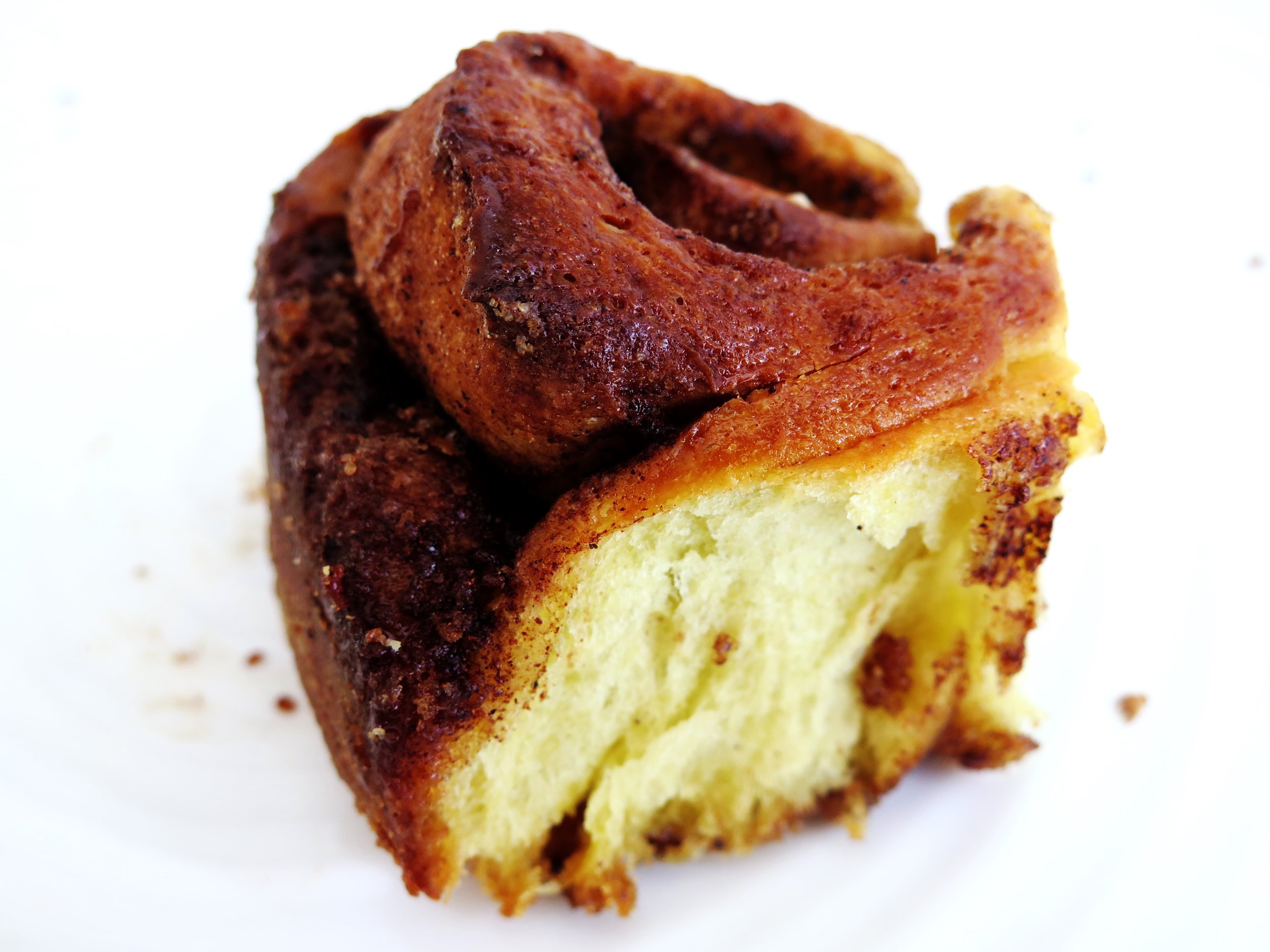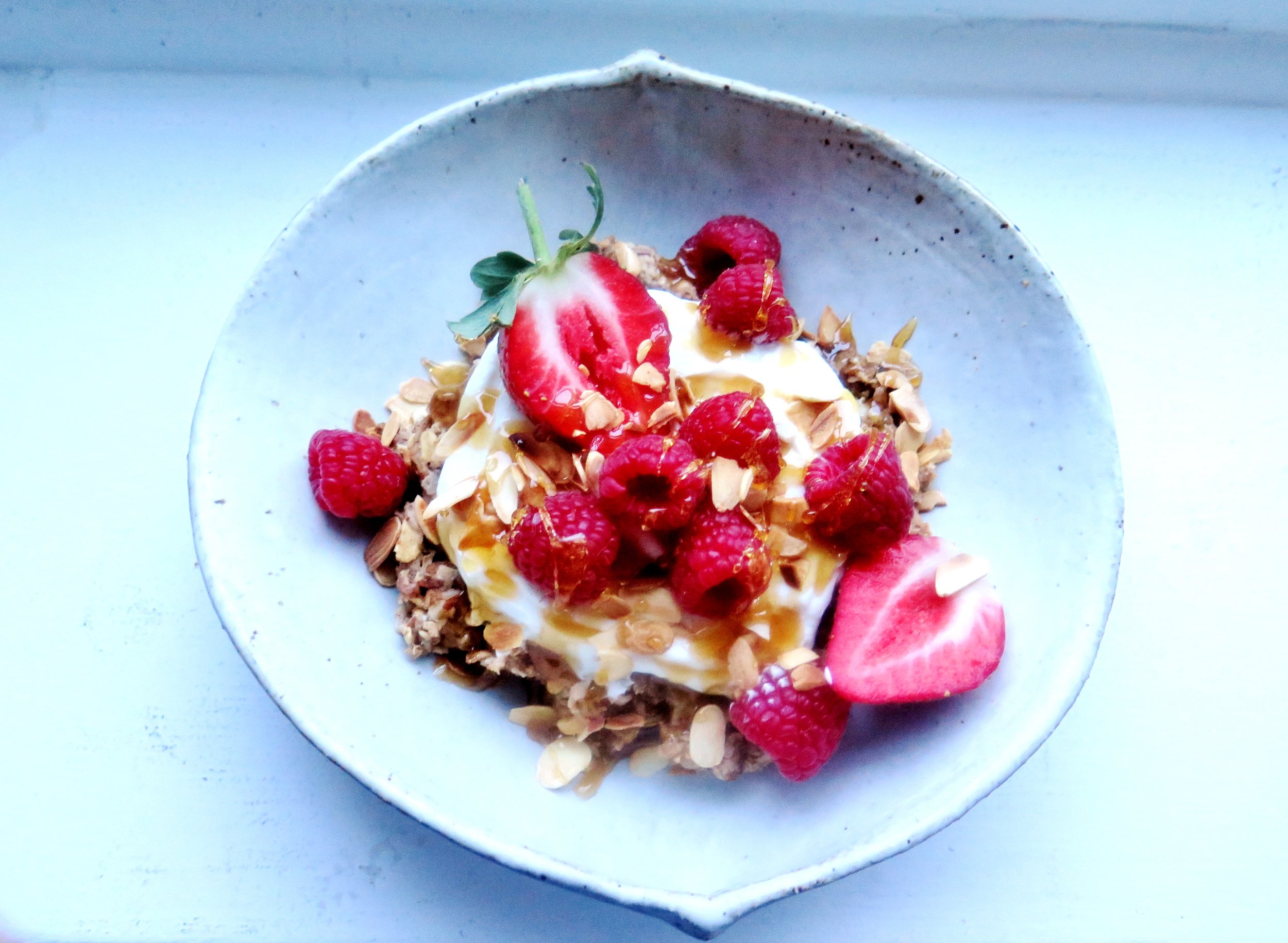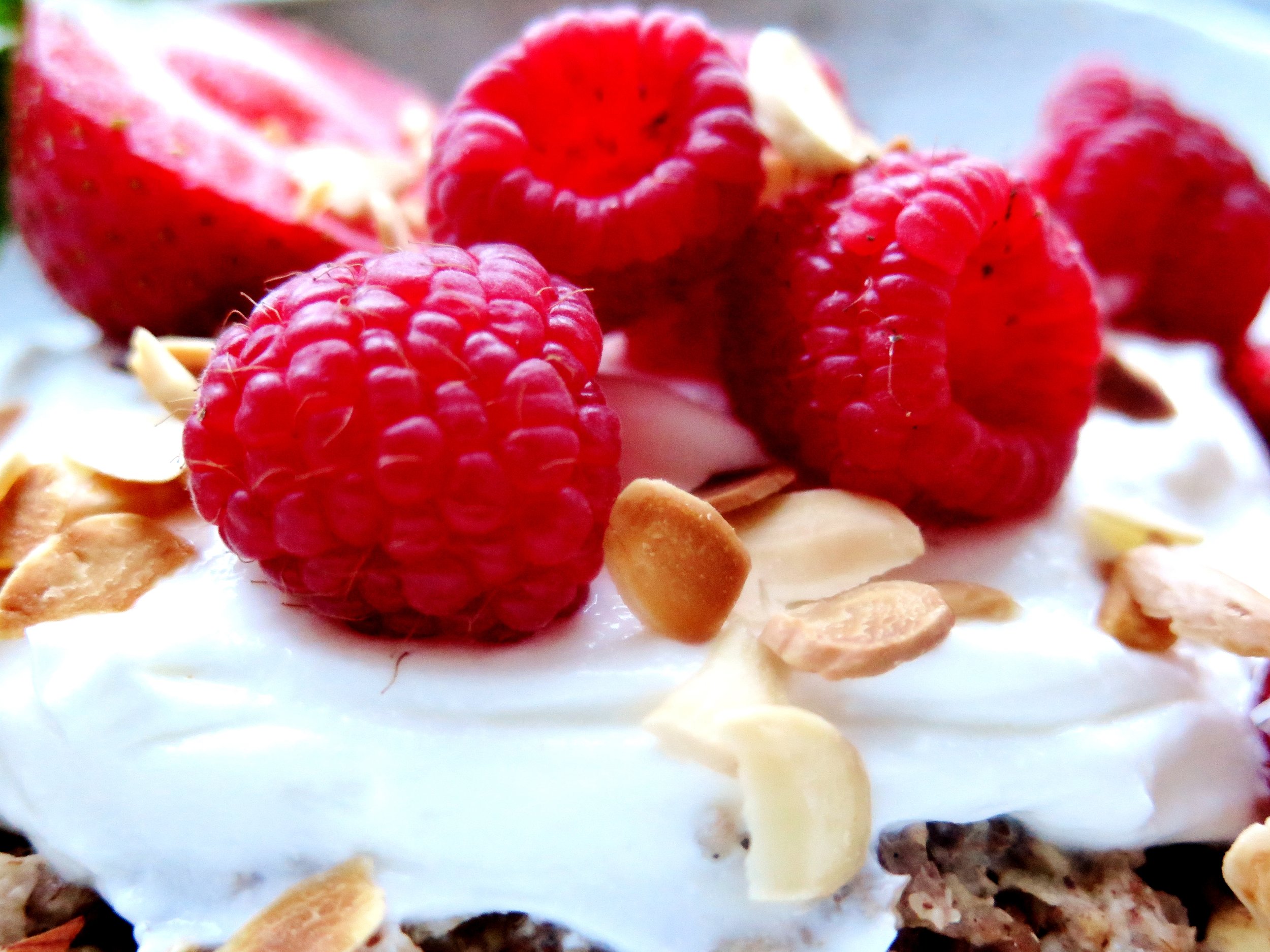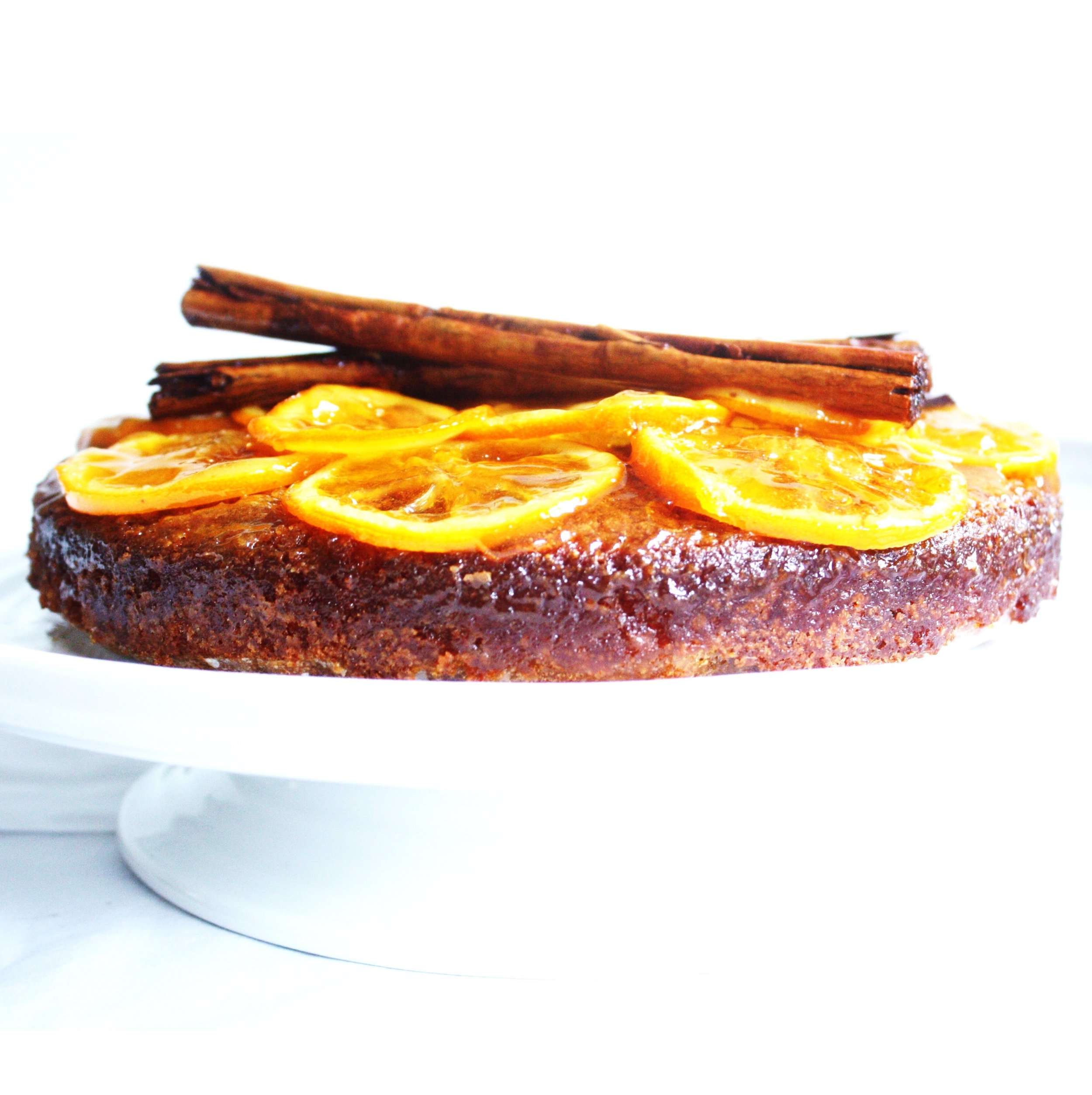This recipe is delivered with a warning: this stollen, despite its understated, simple, appearance, is highly addictive. I ate almost an entire stollen in one day and felt quite sorry for myself afterwards (guilt streaked sugar-overload), so arm yourself with friends or a freezer before making it
Viewing entries in
Cinnamon
Epic apple pie: the pastry is golden and flakey, and the apple filling a medley of tart, tangy and sweet. There’s a hint of autumnal spice (without it being overpowering), and it’s topped, not with more pastry, but a brown butter cinnamon crumble that adds moreish crunch.
It’s the perfect cake for vegans and non-vegans alike: no weird gums or chemicals or frogspawn-y aquafaba, and it doesn't even need them. It’s moist, sticky and absurdly moreish. It can stand proudly beside any egg-containing cake, and win over any vegan cake-hating sceptic. When I say it’s easy to make, I mean it is exceptionally easy. It can be whipped up in under 10 minutes and, if you're making mini loaves, it bakes within 10 minutes too.
I don’t understand why there’s a “season” for pumpkin spice themed dishes when delicious pumpkin puree is available (from a can) all year round. In honour of this recent discovery, I decided to make these cookies. I was influenced by a recipe on Bon Appetitwhich incorporated pumpkin and various spices into a cookie. However - I was very disappointed by the result: the cookies were mean and thin, with root canal problem-inducing sweetness, overly egg-y, and totally lacking in the promised pumpkin flavour.
So, I made my own to tick the 3 commandments of cookies:
- Chewy
- Molten
- Thick
I radically amped up the amount of pumpkin, and reduced the sugar. I also added both white and milk chocolate, so that, upon baking, they caramelized, creating a sophisticated toffee flavour. The added crunch and maple-flavour of the pecans add some complexity, too.
NB If you would like a more savoury cookie, you could switch the milk and white chocolate for dark chocolate. And if you’d like to have a supply of cookies for emergencies, you can freeze the scoops of uncooked cookie dough and bake them when desired.
Pumpkin spice cookies (makes 20-22)
Ingredients
150 unsalted butter, softened
80g light brown sugar
70g caster sugar
1 egg
40g pumpkin puree
1 ½ tsp vanilla extract
½ tsp cinnamon
1 ½ tsp ground ginger
¼ tsp ground nutmeg
1/8 tsp mixed spice
220g plain flour
heaped ½ tsp baking powder
½ tsp salt
100g white chocolate + 30 g white chocolate for topping (I use buttons but you can chop up a bar or use chips instead)
50g milk chocolate, roughly chopped
50g chopped pecans, + 20g for topping
2 large baking trays, lined with baking parchment
Method
1) Put the unsalted butter, light brown sugar and caster sugar into the bowl of an electric mixer, fitted with the paddle, and beat until light and fluffy (about 5 minutes). If doing by hand, beat ingredients together with a spoon. Add the egg, pumpkin puree and vanilla extract, and beat until full combined.
2) Add the spices (cinnamon, ginger, nutmeg, mixed spice), flour, baking powder and salt to the wet ingredients, and very gently fold together until almost combined, leaving some flour still visible. Add the chopped milk chocolate, white chocolate and pecans, and very gently fold them into the cookie dough until combined.
3) Cover the bowl and refrigerate for minimum 1 hour and up to 24 hours (until you’re ready to bake the cookies).
4) Preheat the oven to 180°C. Then. either using an ice cream scoop, or a tablespoon, scoop the cookie dough into 40g dollops. I weigh each one to make sure they cook evenly, but if you can’t be bothered just estimate. Roll each into a sphere between your palms to ensure that they bake into near-perfect rounds. Place on the tray leaving about 4cm between each so that they have room to spread when they bake. Then, into each sphere, press a piece of white chocolate and a piece of pecan.
5) Place in oven to bake for 7-10 minutes, or until they are golden at the edges but still soft to the touch. Once they are removed from the oven, they will continue to cook on the baking tray so leave them to sit for a couple of minutes. Serve warm if you can’t wait, or keep them for up to 4 days in an airtight container. You can also freeze them in an airtight container for up to 3 months.
HUNGRY FOR MORE?
OK, so I’m going to tell you about a brilliant new diet to ensure you lose all that Christmas flab.
It throws 5:2, Keto, raw food, Mediterranean and intermittent fasting out of the window. If you’re disillusioned with all those malware-laden pop up adverts on illegal streaming sites that you secretly clicked on promising flat belly magic trick, let me right that for you.
After some hardcore, scientific studies on how people gain weight, which foods trigger fat gain and how we’re rotting our metabolism, my dad had an epiphany and realised that all these diets were ignoring the obvious.
All those Instagram/YouTube stars chronicling the secrets to peachy bums, thigh gaps, hotdog legs and concave stomachs have been holding back their industry secrets. It’s not food groups that need to be cut out, but letters. All the foods (and often drinks) that stand in the way of a lean, rippling bikini bod have something in common: biscuits, cookies, bread, chocolate, cake, bagels, beer, cocktails, champagne, and brownies. Yes. That’s right – you’ve wasted money and/or time logging on to My Fitness Pal, consulting dieticians, and calorie counting when I have just given you the secret to fat loss. Cut out the Bs and Cs and you are on your way to fitfluencer stardom.
Pregnancy is the benchmark by which weight gain is measured in my household, and my dad came back from India in his second trimester.
Turns out feasting on gulab jamun, breakfast, lunch and dinner dosas, curry upon curry, daily afternoon tea and even straight up jaggery does that to you. This drastic increase from two to five months’ gestation in the space of two weeks, plus a stomach of steel allowing evasion of the revolting bug that had churned up the rest of my family’s insides, meant that a new diet and regime was mandatory. And when my dad commits to something, he is an all-or-nothing person. And let me tell you, cutting out B and C foods is far easier than you might think. In fact, it’s practically seamless. Don’t worry about cheat meals or relapses because this is a diet that works perfectly with whatever lifestyle you were already leading.
My dad’s commitment to the diet has been so fervent and admirable that when I offered him a Jerusalem bagel (from last week) he refused.
He heroically turned down the molten chocolate brownies that I brought into work. He didn’t even respond to me when the exotic perfume of these thick, soft and chewy spice cookies wafted round the house (commendable).
You see the diet works so well that if you’re clever about it, and careful, you don’t really need to sacrifice anything at all.
His resolve has been so strong that cookies are now banned from our house, as are bagels, biscuits, chocolate and brownies.
Instead, we have a whole inventory of agels, and iscuits, hocolate and rownies and ookies.
My dad has had five of these spice ookies today and he’s still fully committed to the diet - and so can you. Just like that one calorie that gets left floating in the can when you have diet coke, so all the muffin-top inducing calories are left behind when the B and C’s are seamlessly spliced from your favourite treat.
This is the diet to be on because these (c)ookies are the ambrosia of the (c)ookie world – they’re a one bowl wonder and can be whizzed up in a matter of minutes.
There’s no freezing, chilling or resting meaning that they can go from flour packet to final product-in–mouth in about half an hour (pausing en route for some of that dough). I know cookies can be a very subjective, personal and emotional topic, but these are undeniably the top tier: slightly crisp on the outside and soft thic(cc)k and chewy. If you fear that the batch may disappear before you get a look in, feel free to double it – the results will be the same. They can also be stored in an airtight container in a freezer for up to three months which is ideal if you want to whip them out for unexpected occasions (emergencies).
Thick & Chewy Spice Cookies - Recipe
Makes 12-14 cookies
Ingredients
220g white spelt flour (or plain white flour, if you prefer)
2 ½ tsp baking powder
60g caster sugar
1 tsp ground ginger
½ tsp ground cloves
1 tsp ground cinnamon
1 ½ tsp baking soda
100g unsalted butter, at room temperature, roughly cut into cubes
100g golden syrup
20g treacle
¼ tsp salt
1 tsp mixed spice
large baking tray lined with baking parchment
Method
1) Preheat oven to 160°C.
2) If using a food processor (super quick), pour in all the dry ingredients and whizz to combine. Then add in the butter and pulse until the mixture becomes like damp sand. If making by hand, in a large bowl stir together dry ingredients. Then add in the butter and rub into the dry mixture with your fingertips until it reaches a damp sand-like consistency.
3) In a small pan over a low heat, pour in the syrup and treacle, and stir until combined and warm. Pour into the sand-like mixture, and pulse until it just about comes together into a dough, taking care not to over mix. If making by hand, pour the treacle into the sand-like mixture, and stir together until it forms a dough.
4) Make the cookies by breaking off pieces of the dough with your hands and rolling them into a sphere. I make each one 35g to ensure that they bake consistently. Then space the spheres on a baking tray at least 5cm apart. Place in the preheated oven to bake for 8-12 minutes until golden but soft to the touch. They will continue to bake once removed from the oven so taking them out slightly underdone ensures that they have a chewy centre.
5) Allow to cool before eating (they will be too friable when straight out of the oven), then devour. Once cool, they can be kept in a sealed airtight box in a freezer for up to 3 months.
HUNGRY FOR MORE?
If I told you that a vegan, refined sugar-free, protein-rich, wheat-free, ancient-grain (and if you so desire, gluten-free) cookie existed, you’d think it was the stuff of myth and legend or, alternatively, something so disgusting that it couldn’t be deemed edible.
Well, it does exist.
After an overindulgent stay in NYC, I made these for my birthday. They aren’t overpoweringly sweet, and they aren’t going to be equivalent to the 500 calories a pop thick, fudgy cookies you see in bakeries. However, they are delicious in their own right, soft and just sweet enough. Plus, being vaguely healthy automatically entitles one to devour 5x the quantity. In fact, for a snack to be officially deemed a source of protein, it needs to contain 6g protein. Well, 3 of these cookies contain just that.
They are extremely quick to conjure up and would be good for that weak-point, late afternoon slump when you crave something sweet, and delicious, too, paired with a (vegan) ice cream for dessert, or even with a wedge of stilton and a dollop of pear compote if you’re going down the non-vegan route. If you want a slightly more savoury option, substitute the dates with figs as in the photos.
Ingredients (makes 20 medium cookies)
160g pitted medjool dates, roughly chopped (about 10) (if you want a more savoury cookie, substitute dates with figs, as per the photos)
4 tbsp orange juice
4 tbsp water
1 tsp vanilla
½ tsp finely grated orange zest
80g smooth peanut butter
200g spelt flour (or gluten free flour)
½ tsp mixed spice
¼ tsp salt
baking tray lined with baking parchment
4-5cm round cookie cutter
Method
1) Pre-heat oven to 180°C
2) Place the chopped dates, orange juice, water, vanilla extract and orange zest in a small pan over a medium/high heat and allow to come to a boil. Stir continuously for about 4/5 minutes until all the liquid has evaporated and the dates have turned into a thick, sticky pulp.
3) Place the date mixture together with the peanut butter in a blender and pulse until smooth. Pour in the spelt flour, mixed spice, and salt and pulse until it comes together to form a slightly sticky dough.
4) Lightly flour a board and roll out the dough to a 0.5cm thickness. Stamp out cookies with the cutter and place on the baking tray. Bake in the oven for 7-10 minutes until firm and slightly golden. Allow to cool, then devour.
HUNGRY FOR MORE?
A trip to Toronto when I was seven years’ old is anchored for me by one thing: not the CN tower, or Niagara Falls or my cousin’s wedding, but a visit to the farmers’ market, and in particular, a potentially life-changing stall. A tall, russet-cheeked man was in command, his floured apron stretched taught over his protuberant belly.
And on his table lay not the garish, sprinkle- speckled swirls that would have drawn a normal child. Instead, tray after tray of rubbly slabs of oat and date crumble bars were arrayed.
The date layer of the bars was jaw-clenchingly sticky, and thick – not like the mean, shop-bought equivalent. The oaty outer layers were both crunchy and then soft, golden and not overly sweet, allowing the natural date sweetness to shine through.
. For the last seventeen years I’ve been raiding bakeries and markets, seeking to relive the experience, but the date and oat crumble bars always disappoint – too saccharine, too solid, too floury. In between raids, I’ve been working on my own: these are the closest I have come to Toronto’s best kept secret. I added the crushed amaretti to give them a little twist. Feel free to leave the sugar out of the crumble if your palate is adjusted to the less-sweet.
It’s incredibly hard to resist them when they emerge from the oven golden and crisp, but I think they taste even better when they have cooled and the flavours are more distinct (or maybe try them both ways, just to be sure…).
NB. They can be made gluten-free by substituting gluten-free flour for spelt.
Ingredients
Date filling
400g medjool dates, pitted & roughly chopped (about 20)
3 tbsp fresh orange juice
120ml water
2 tsp vanilla extract
½ tsp mixed spice
½ tsp finely grated orange zest
Crumble
250g oats
120g butter
100g wholemeal spelt flour
50g dry amaretti biscuits
40g light brown muscovado sugar
¼ tsp mixed spice
½ tsp vanilla extract
¼ tsp salt
A square 20cm baking tin (or tin of equivalent area), lined with baking parchment, with sides and base fully covered.
Method
1) Preheat oven to 180°C
2) Place all ingredients for the date filling in a pot and place on a medium heat. Stir as the mixture begins to simmer. After about 5 minutes, when the dates have broken down into more of a paste and all the water has evaporated, remove from the heat and set aside.
3) Pour all the crumble ingredients into a blender and pulse until the mixture still has some texture and is slightly coarser than sand.
4) Pour 2/3 of the crumble mixture into the base of the tin, and, with your fingers or the back of a spoon, press the mixture down evenly across the base of the tin until firm and compact. Pour the date filling over and spread evenly across the base. Then pour over the remaining crumble mixture and press down until even and as compact as possible.
5) Place in oven to bake for 15-20 minutes until golden and firm to the touch.
6) Slice and allow to cool before devouring. Keeps well in an air tight container in fridge for up to 5 days, or in freezer for 2 months (also tastes delicious when frozen).
HUNGRY FOR MORE?
Moreishly light & flaky pastry swirled with chewy & caramelised cinnamon dusted apricots & sultanas
This is the cinnamon apple crumble pie 2.0. Tried, tested, and enhanced...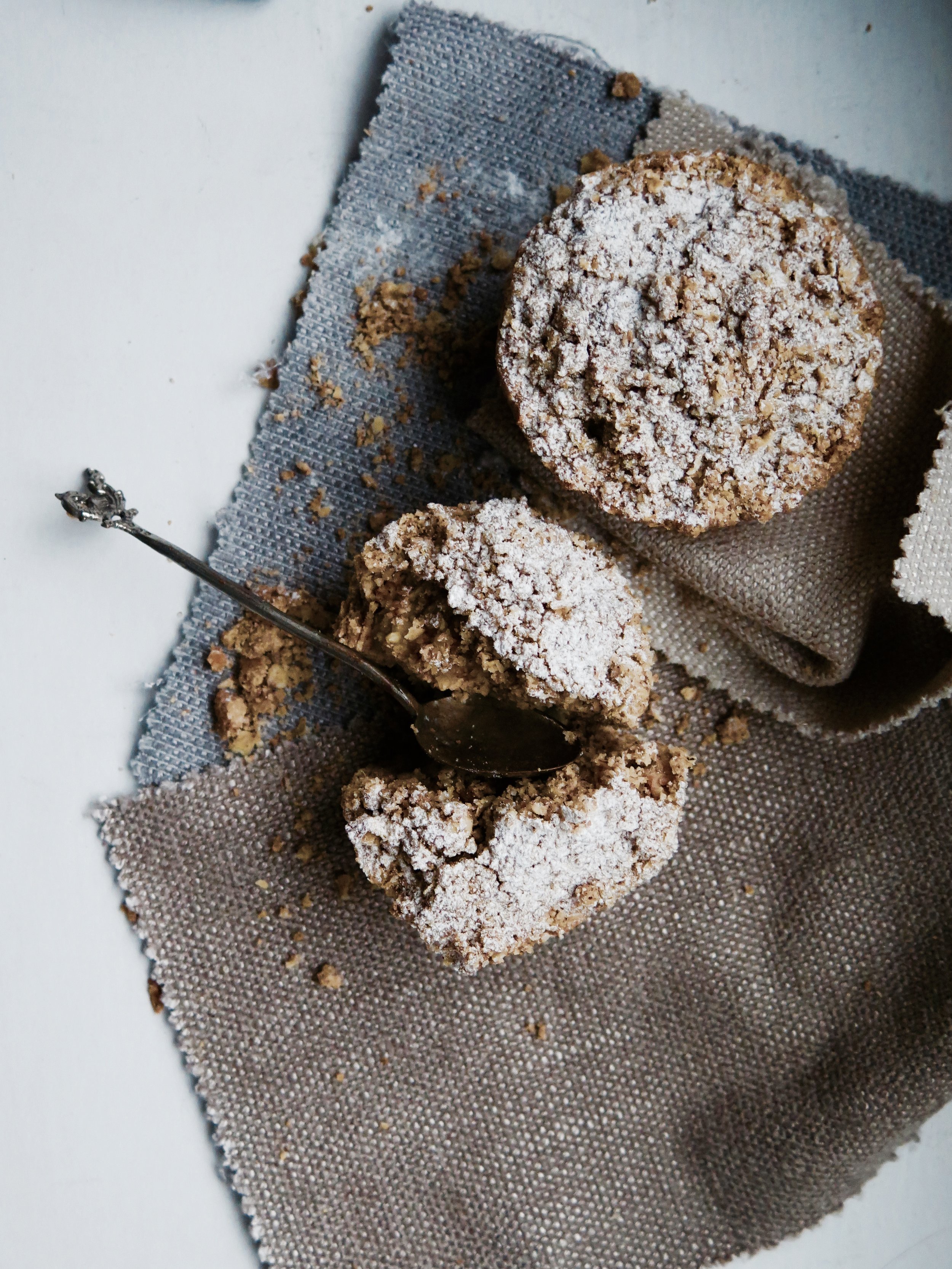 Soft, crunchy, crumbly, fresh, sweet, and on the cusp of sour – the Gail’s Bakery apple crumble cake is what I crave. It’s the ultimate winter treat, although I gaze longingly through the bakery window at them year-round.
Soft, crunchy, crumbly, fresh, sweet, and on the cusp of sour – the Gail’s Bakery apple crumble cake is what I crave. It’s the ultimate winter treat, although I gaze longingly through the bakery window at them year-round.
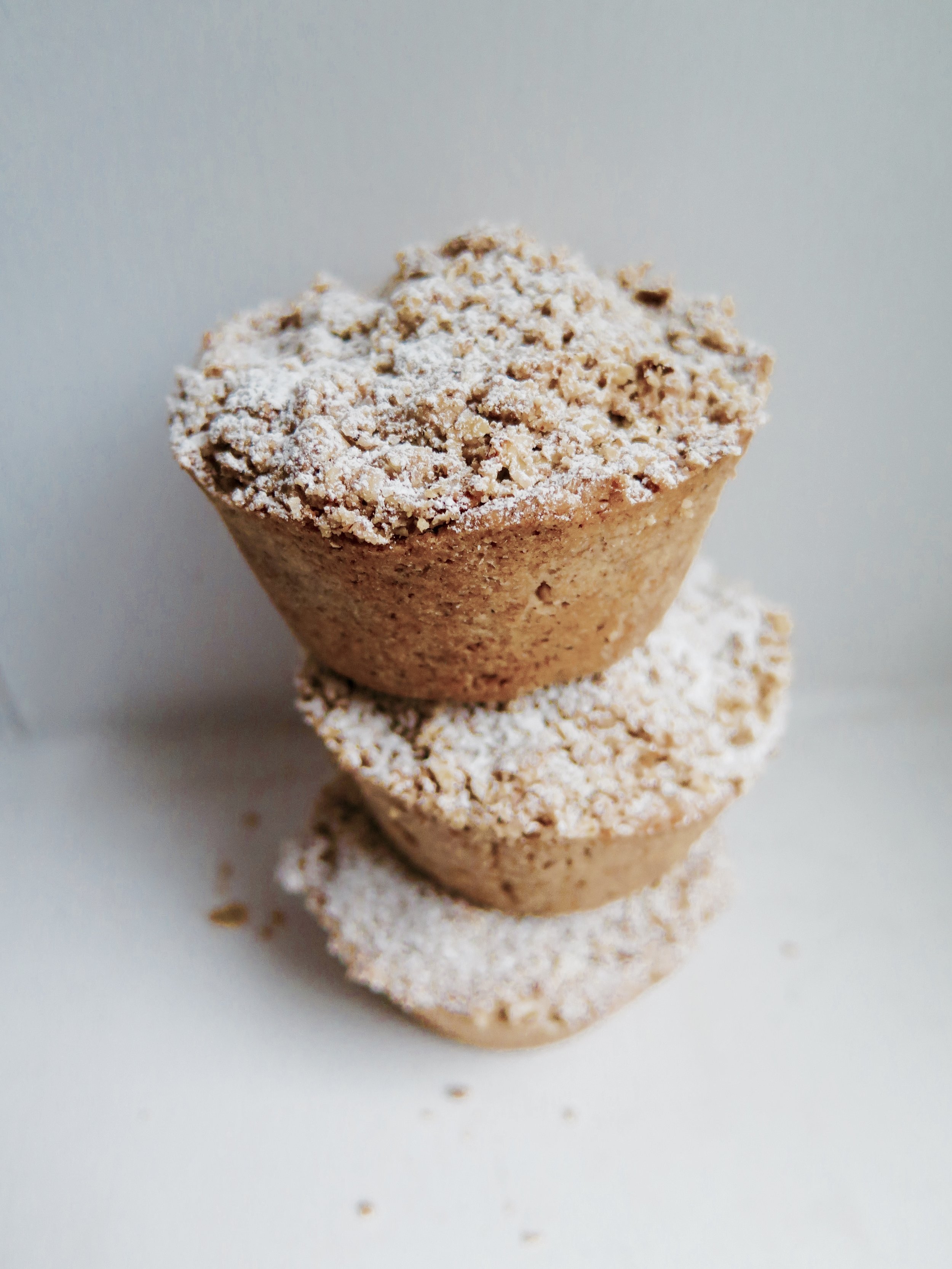
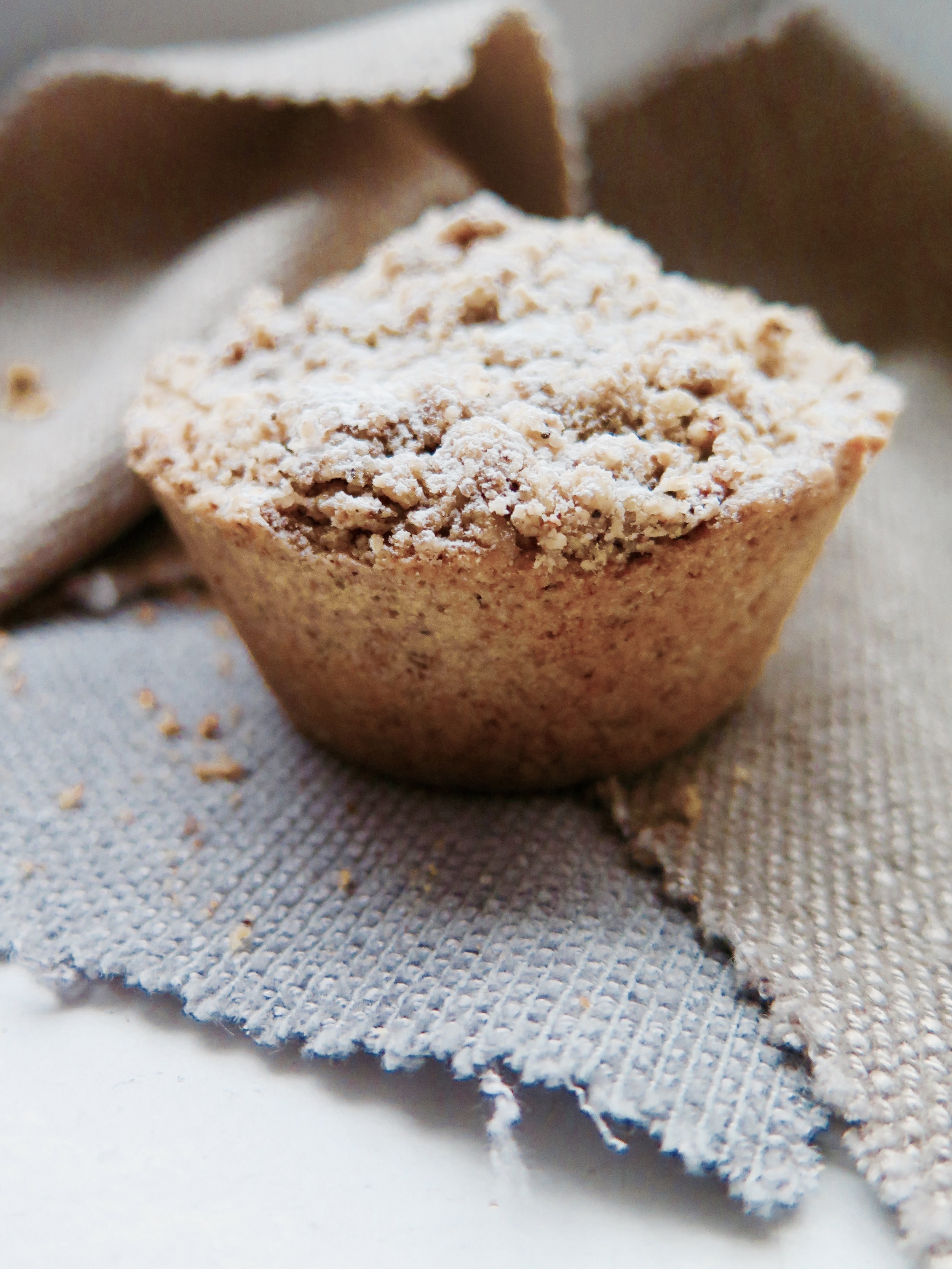 I bought the Gail’s Artisan Bakery Cookbook a few months ago in the hope that they had divulged the secret of their signature apple crumble cake. They hadn’t.
I bought the Gail’s Artisan Bakery Cookbook a few months ago in the hope that they had divulged the secret of their signature apple crumble cake. They hadn’t.
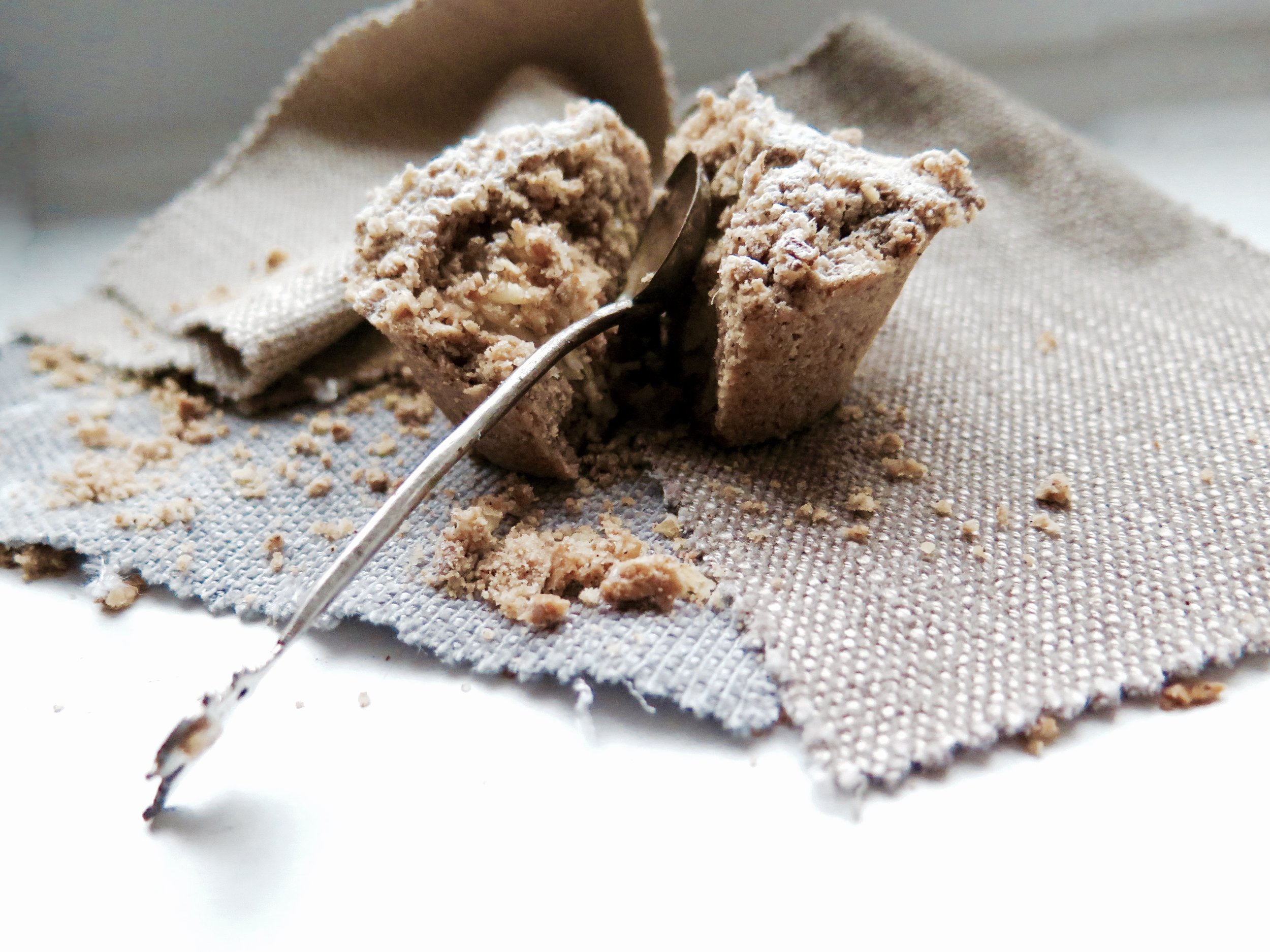
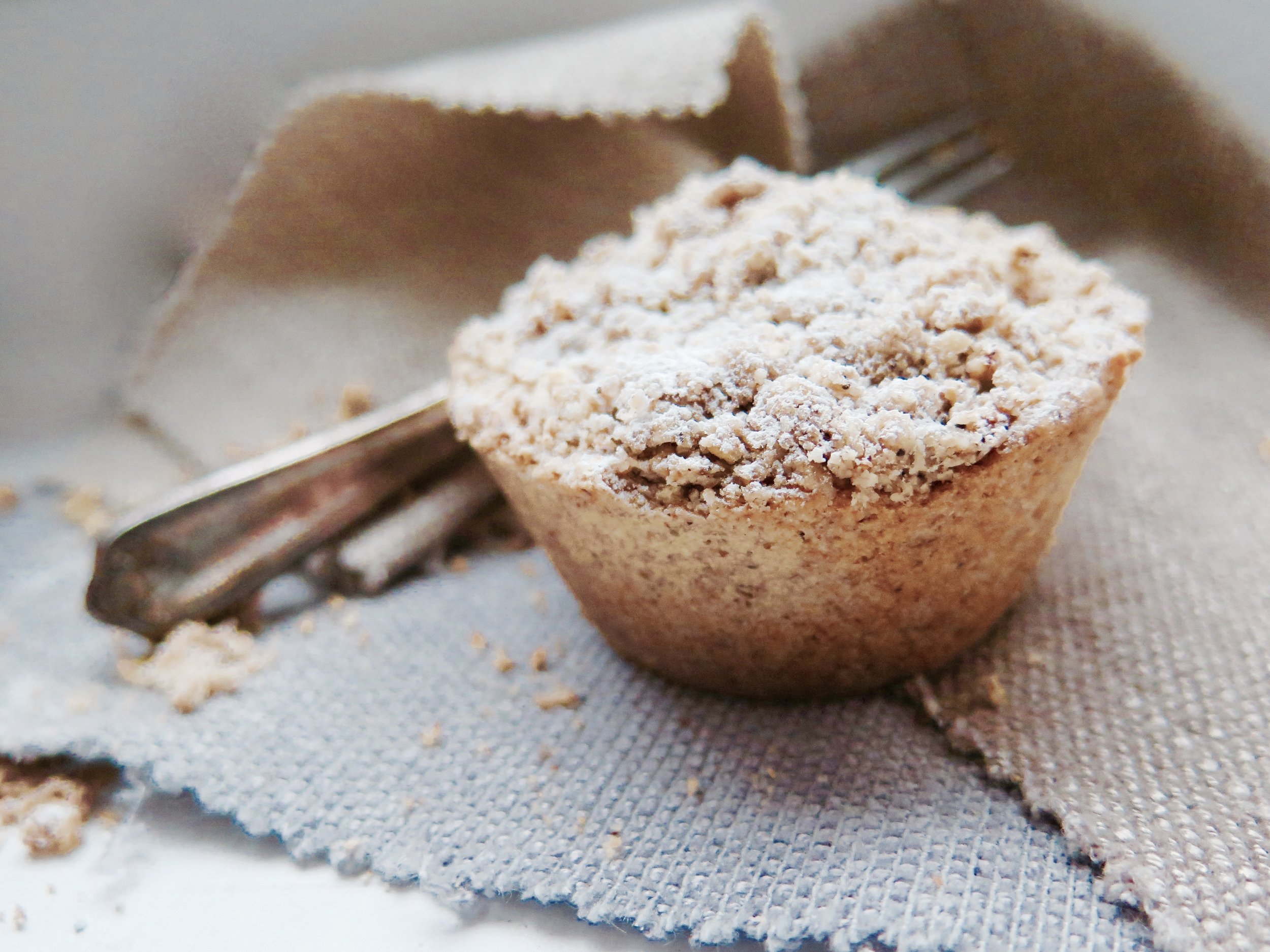
As a result I’ve just had to develop my own recipe – more wholesome, with more cinnamon and less sugar, I’ve heard they may even be superior…
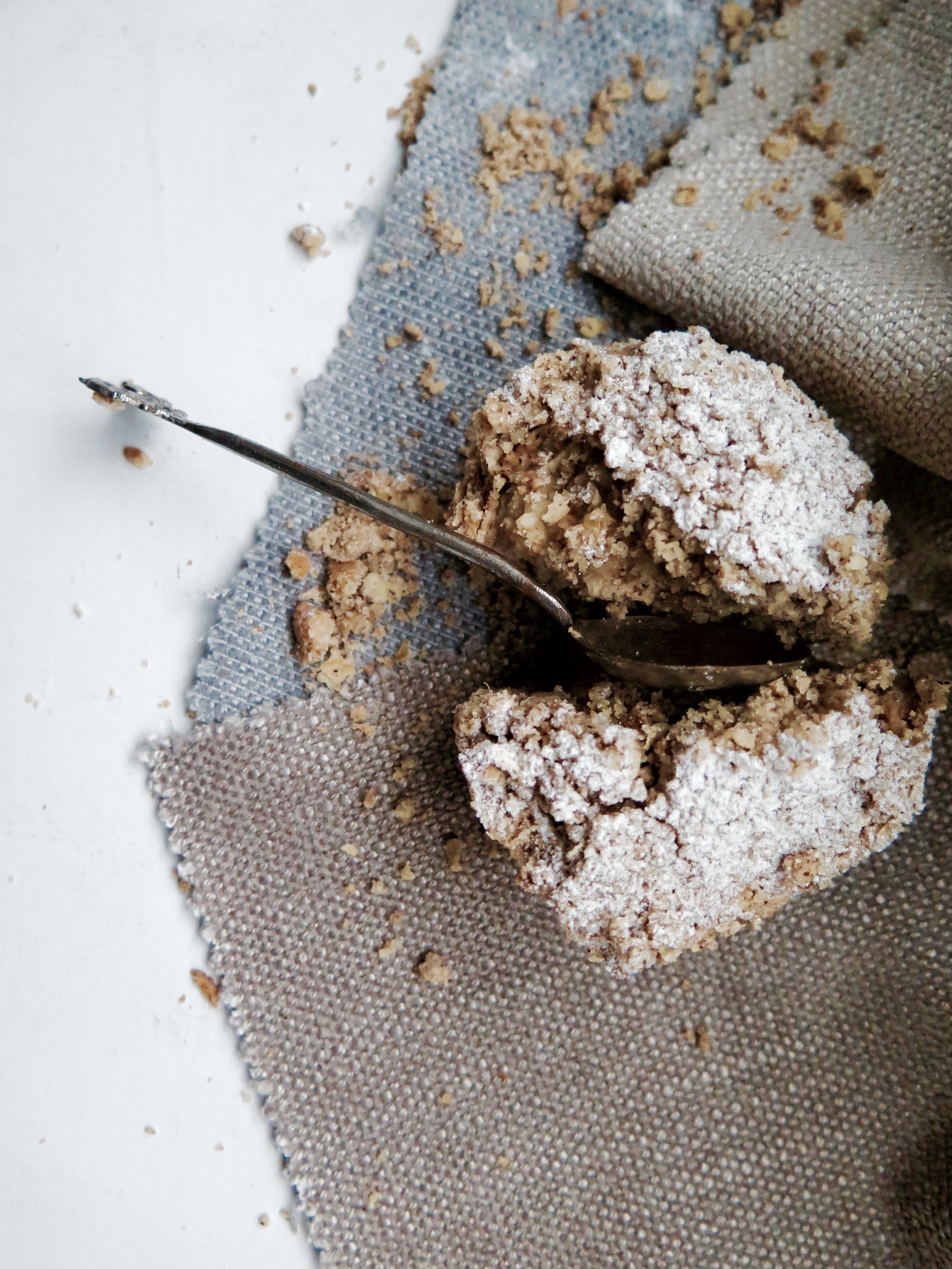
Ingredients
(Makes 15)
Pastry
320g (11.3 oz) wholegrain spelt flour
110g (3.9oz) icing sugar
2 tsp cinnamon
½ tsp salt
165g (5.8oz) butter, roughly chopped into cubes
1 large egg, beaten
Apple Filling
700 (1lb 5oz) grams of peeled, cored and coarsely grated Bramley apples (about 3 large apples)
70g (2.5oz) caster sugar
Crumble topping
80g (2.8oz) wholegrain spelt flour
45g (1.6oz) oats
45g (1.6oz) caster sugar
50g (1.7oz) butter
2 tsp cinnamon
¼ tsp salt
15 hole muffin/cupcake tin, greased (usually they come in 12s, in which case you will need 2 x muffin trays
Method
Pastry
- In a blender, blitz together dry ingredients. Then add in the butter and pulse until the mixture resembles damp sand. Pour in the egg and continue to pulse until the mixture clumps together into a dough. Avoid mixing it more than necessary.
- Flatten the dough roughly into a disc and wrap in cling film or baking parchment. Chill in the freezer while you make the other elements.
Apple Filling
- Place all ingredients in a pan and stir over a high heat for about 5 minutes until the apple turns soft but some texture still remains. Strain the mixture using a sieve, pressing down to get rid of excess liquid (about 250ml, which incidentally tastes like a delicious mulled cider). Set aside to cool.
Crumble
- Place all ingredients in a blender and pulse until the mixture resembles damp sand.
Assembly
- Preheat an oven to 180˚C.
- On a floured surface, roll out the chilled pasty to a thickness of 0.5cm. Cut the pastry into circles with an area similar to that of the muffin tin holes (about 8-10cm), and press each circle in the holes. You may need to patchwork the pieces together.
- Prick the pastry lining the muffin holes with a fork, and bake in the oven for 8-10 minutes, or cooked through and beginning to golden slightly.
- Take the tin out of the oven and spoon 2tbsp of the cooked apple into each pastry shells. Top the cakes by spooning a few tablespoons of the crumb topping over each cake, patting it down and then sprinkling the rest of the mixture over. I like to clump some of it together before scattering it over in order to add further texture and rustic appeal.
- Bake in the oven for 8-10 minutes until the crumble topping is golden and crisp. Serve hot or cold.
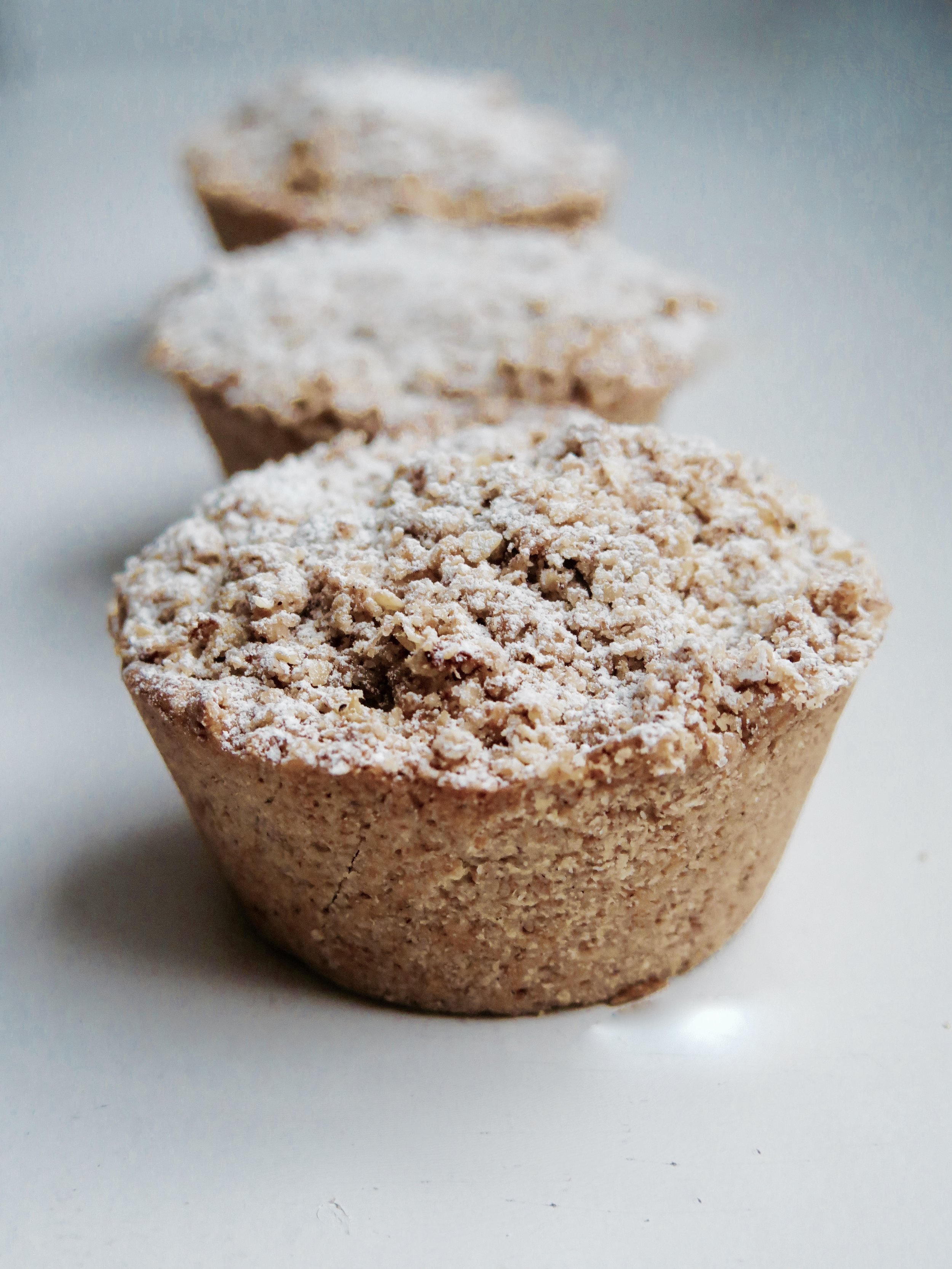
Afternoon tea. What do you think of when someone says those words? Tiers of fluffy isosceles sandwiches, miniature entremets layered with fruit, caramel, and chocolate, and maybe a scone glistening with strawberries. Crisp napkins, high ceilings, the tinkling of fine bone china…
Near where I live there is an Austrian tea room. The window is filled with garish glace cherry- adorned, deflated pastries, crusted squiggles of festering cream, and opera cake melding into a brown sludge. It opened 60 years ago, and the décor and pastries appear not to have been refreshed since.
Inside, it is dark and cramped, and the airless atmosphere is thickened with hot breath and the oversweet smell of fat and sugar.
Their Linzer biscuits, however, remind me of Jammie Dodgers – those jam-filled, shortbread biscuits of my childhood that only other people’s mothers allowed – and inspired me to re- interpret them.
These have a slight Moroccan edge: spiced, delicate with a slight chewiness, filled with the tangy conserve of your choice.
I like marmalade for the tart/bitter contrast against the sweetness of the pastry, but strawberry also works well. Of course, you can go for any shape, but I am rather taken by the cog-like –quirky take on a Jammie Dodger look.
Ingredients
290g (10.125 ounces) white spelt flour (or plain flour if unavailable)
140g (5 ounces) ground almonds
100g (3.5 ounces) caster sugar
¼ tsp salt
2 ½ tsp cinnamon
¼ tsp ground cloves
¼ tsp almond extract
1 tsp grated lemon zest (about ½ lemon)
1 tsp grated orange zest (about ½ medium orange)
225g (8 ounces) unsalted butter
200g (7 ounces) marmalade or jam of choice (I used marmalade and strawberry)
30g (1 ounce) icing sugar
Large and small cookie cutters (I used 7cm and 3.5cm diameter rings)
2 large baking sheets, lined with baking parhcment
Method
- Pour flour, ground almonds, caster sugar, salt cinnoman, cloves,orange and lemons zest, and almond extract into a food processor and pulse until fully combined. Add in the chopped butter and pulse again until the mixture forms a damp sand-like texture. Keep pulsing until it clumps tighter to form a dough.
- Divide the dough into two rounds and flatten both onto sheets of baking parchment, wrap them and place them in the freezer for about 20 minutes or the fridge for an hour.
- Preheat the oven to 160˚C (325˚F). Remove the disks of dough from the freezer/fridge – if they are too firm to roll, let them sit for a few minutes. Ona thoroughly floured board, roll one disk out to a 3mm (1/8 inch) thickness. Cut out as many cookies as possible and set aside the scraps. Space the disks out on the baking trays as you go. Repeat with the second disk and use the smaller cutter to cut out small holes from the rounds. Press together the accumulated scraps and roll out again. Make sure there are an equal number of whole circles to circles with a cut out circle. A tip to avoid the cutter sticking in the dough is to dip it in flour first.
- Place the trays in the oven and bake for 12- 15 minutes until the cookies are golden but still soft to the touch – they will continue to cook as they cool. When cool, for aesthetic effect, sieve the icing sugar onto the rounds with the circles cut out of them. Then spread a teaspoon of the jam/marmalade onto the complete circles, and lightly press the cut-out layer on top. Devour, delicately, of course…
Is it just me, or is anyone else sick of logging on to Facebook, innocently hoping to drain away half an hour of one’s day (minimum) by looking at pictures of people one may or may not have half met once trying to prove how much fun they are having by posting pictures of themselves with friends/family, strained smiles stretched across their faces, and who are clearly not that immersed in the fun as they have had to spend half an hour trying to get one decent picture out of the hundred they’ve taken to emblazon it across their Facebook wall and maybe, just maybe, turn it into a cover photo?
And then – BAM - your gaze is diverted,
and you are staring down into the depths of a garishly coloured plastic bowl filled with some unidentifiable artificial gunk, pink fleshy hands massaging some other substance into it to form some putty-like emulsion which is then mushed and squeezed and squidged into a plastic mould, whizzed up, and extruded through a bag and…… oh look, it’s that Gooey Oreo, Jellied Eel and Green Marshmallow Mini Coffee Cup that “you’ve always wanted to make for your slumber party with the gals”.
Here’s an antidote. It is simple yet sophisticated, humble yet sumptuous, tangy but not cloyingly sweet, and light yet not so light when you’ve had 4+ pieces….
Ingredients
Pastry
200g white spelt flour (can be substituted with plain flour)
100g butter, roughly cubed
2 tbsp icing sugar
¼ tsp salt
1 small egg, beaten
12 x 36cm tart tin, greased and dusted with flour
Blueberry filling
800g frozen blueberries
250g caster sugar
1 tsp cinnamon
½ tsp nutmeg
2 tbsp cornflour
Zest of ½ medium sized orange
Method
- Place flour, butter, icing sugar and salt in a food processor, and blitz until it resembles damp sand. Pour in the beaten egg, and pulse until the mixture combines to form a soft dough. Remove from the processor, wrap in baking parchment and place in the fridge for half an hour (or freezer for 10-15 minutes) – this will prevent the dough from shrinking when it bakes.
- Preheat the oven to 180˚C. Lightly dust a surface with flour and roll out the dough in a rough rectangle to 0.5cm thickness. Roll the pastry around a rolling pin and transfer to the tin, pressing it into the fluting (if, indeed, your tin is fluted). Run a knife along the top edge of the tin to remove excess pastry. Prick the base of the pastry a few times with a fork, and place back in the fridge for 30 minutes (or freezer for 10 minutes).
- Prepare the pastry for blind baking by lining the inside with a sheet of tin foil and filling it with baking beads to weigh it down while it bakes and to prevent it from shrinking. Place in the oven for 15-20 minutes until the pastry is dry and beginning to turn golden. If it is cooking too slowly, you can remove the beads and tin foil after 15 minutes and continue to bake. Remove from oven and set aside to cool.
- To make the spiced blueberry filling, place a large pan over a high heat and pour in all the ingredients. Stir continuously until the sugar is dissolved in the juice that runs off the blueberries. When the mixture begins to boil, reduce the heat to medium-high and allow to simmer for 20-30 minutes, stirring occasionally to prevent it from catching, until the liquid is almost completely reduced and with the viscosity somewhere between a syrup and a jam. Allow to cool to room temperature, then pour into the pre-baked pastry case.
The scent coming from the paper bag was soft and sweet, and old fashioned rose-like, and when I turned out its contents, eight yellow, somewhat misshapen apple-pears tumbled out.
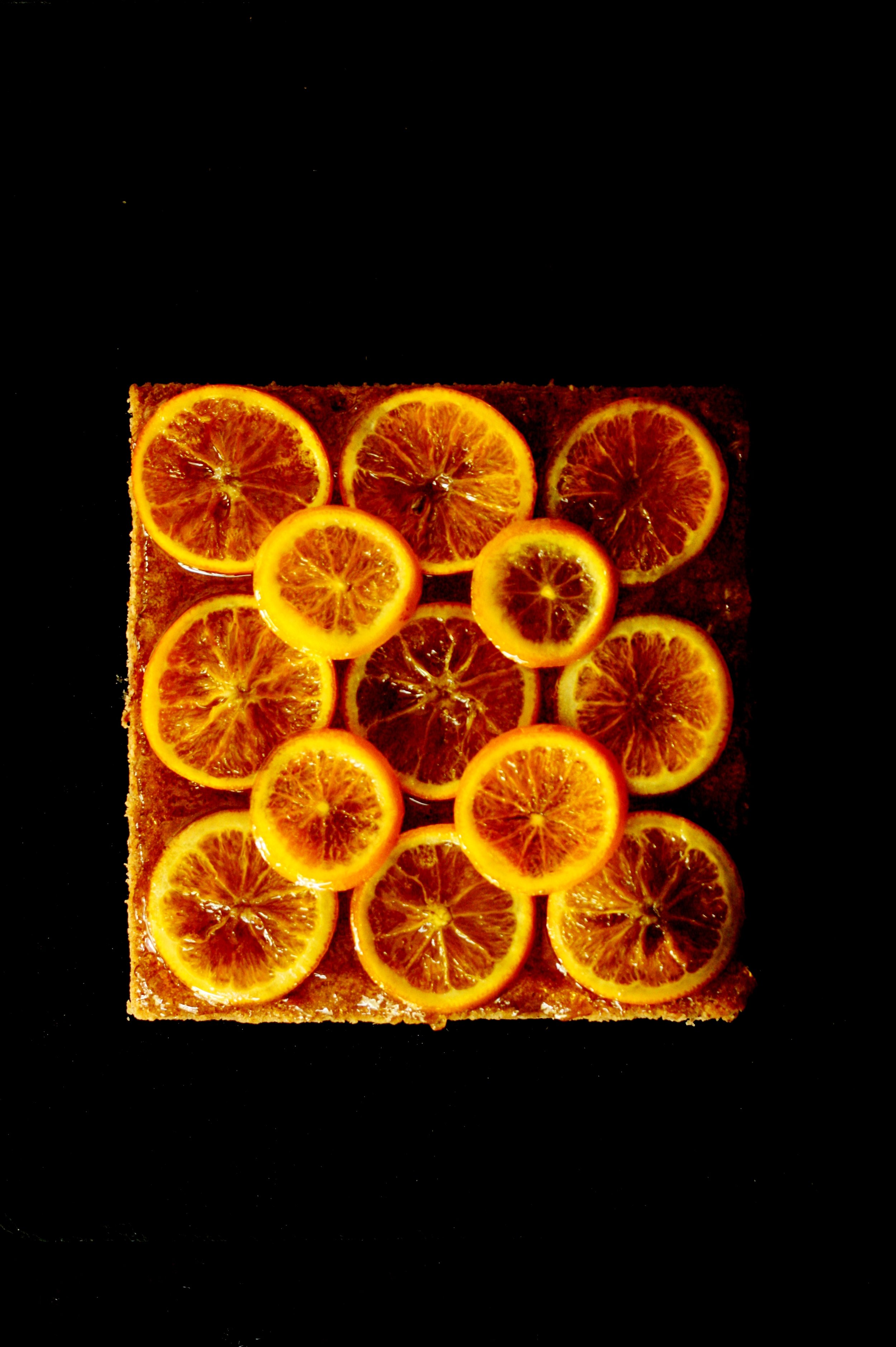 These quinces were the unwanted fruit of an unappreciated tree in someone else’s garden. Beguilingly biblical in appearance, their uncompromising hardness metamorphoses into something utterly different after cooking.
These quinces were the unwanted fruit of an unappreciated tree in someone else’s garden. Beguilingly biblical in appearance, their uncompromising hardness metamorphoses into something utterly different after cooking.
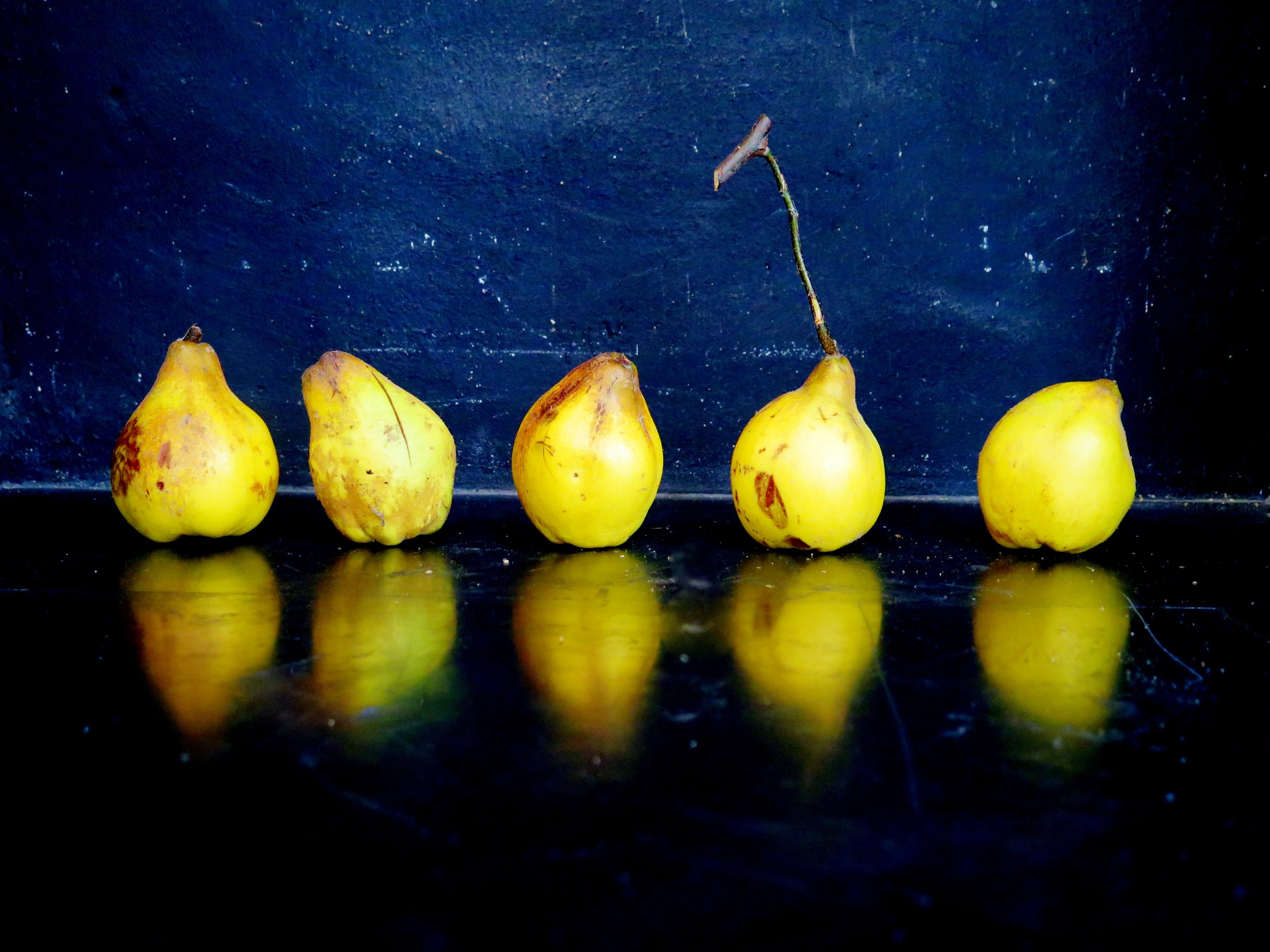 Originally referred to as the Kydonian melon, and mentioned in 6th Century BCE Greek poetry, the quinces we recognise today are believed to have been indigenous to Kydonia on the island of Crete. The Ancient Greeks dedicated the quince to Aphrodite, goddess of love and beauty, who was often represented with the golden apple of Hesperides in her right hand – that apple, in all likelihood, a quince. Indeed, quinces symbolised love and fertility, and Plutarch refers to the ancient wedding ritual whereby a bride would take a bite from a quince before retiring to the bridal chamber with her husband – possibly to freshen her breath, too.
Originally referred to as the Kydonian melon, and mentioned in 6th Century BCE Greek poetry, the quinces we recognise today are believed to have been indigenous to Kydonia on the island of Crete. The Ancient Greeks dedicated the quince to Aphrodite, goddess of love and beauty, who was often represented with the golden apple of Hesperides in her right hand – that apple, in all likelihood, a quince. Indeed, quinces symbolised love and fertility, and Plutarch refers to the ancient wedding ritual whereby a bride would take a bite from a quince before retiring to the bridal chamber with her husband – possibly to freshen her breath, too.
 The path of the wedding procession of Helen and Menelaus was said to have been strewn with quinces, myrtle leaves and crowns woven from violets and roses. The fruit was also said by Pliny to have warded off the malign influence of the evil eye, and its medicinal value as an aid to digestion was also noted.
The path of the wedding procession of Helen and Menelaus was said to have been strewn with quinces, myrtle leaves and crowns woven from violets and roses. The fruit was also said by Pliny to have warded off the malign influence of the evil eye, and its medicinal value as an aid to digestion was also noted.
The Byzantines made wine from quinces as well as kydonaton, a thick quince jelly, probably the ancestor of French cotignac or condoignac, a delicacy made with honey, wine and spices that was considered a worthy gift for kings.
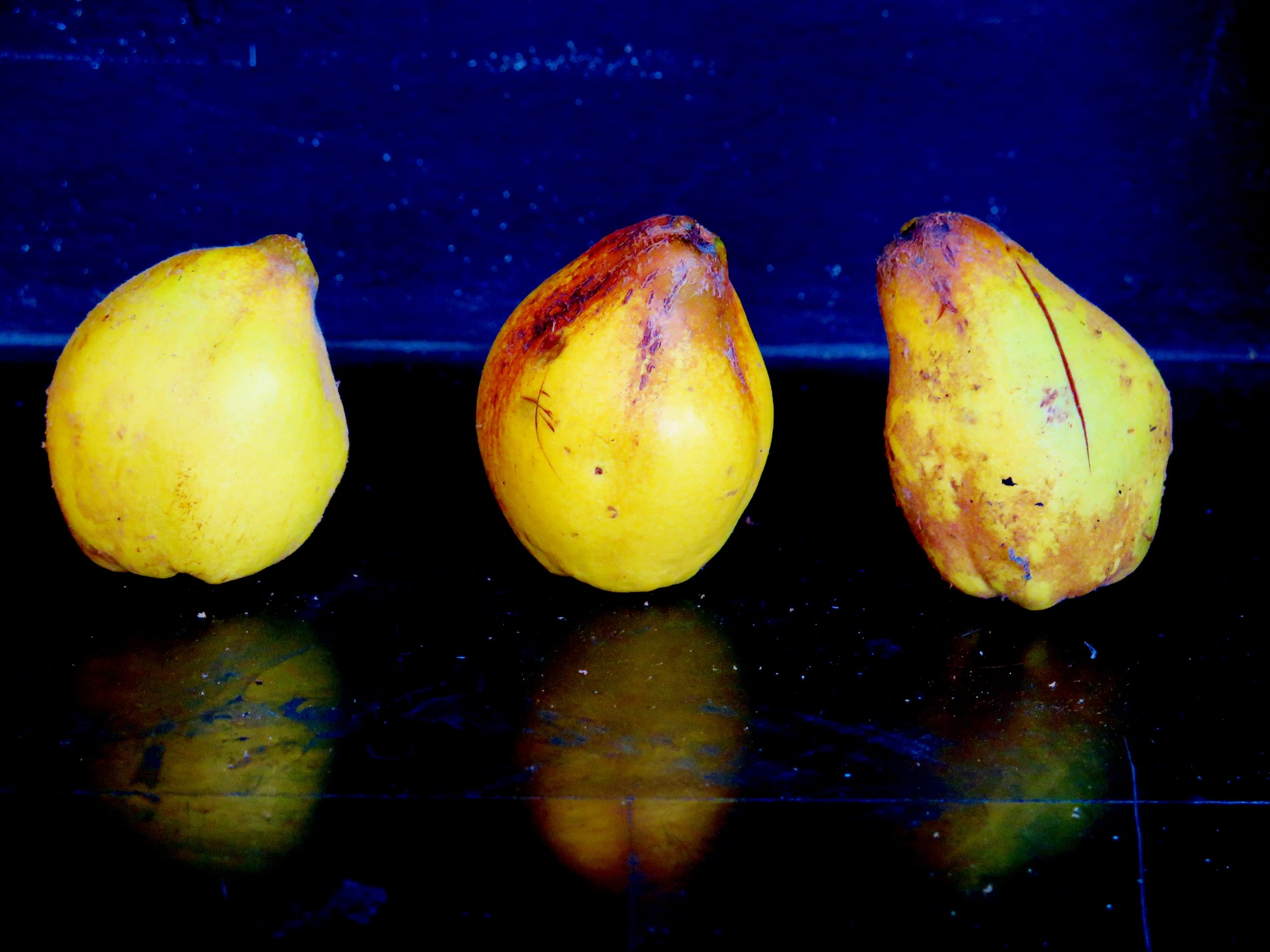 Apicius, the first extant Roman cookbook writer, of the first century CE, preserved quinces whole in honey diluted with a spiced wine reduction, and also combined them with leeks, honey, and broth in hot oil in a dish known as Patina de Cydoniis. In the 4th Century CE, Palladius, an agriculturist and writer, composed a recipe for baked quince strips, possibly the first stirrings of membrillo, the Spanish quince gel that we know today.
Apicius, the first extant Roman cookbook writer, of the first century CE, preserved quinces whole in honey diluted with a spiced wine reduction, and also combined them with leeks, honey, and broth in hot oil in a dish known as Patina de Cydoniis. In the 4th Century CE, Palladius, an agriculturist and writer, composed a recipe for baked quince strips, possibly the first stirrings of membrillo, the Spanish quince gel that we know today.
During the 16th and 17th centuries, cooks in England prepared many variations of quince preserves which they called quidoniac, quiddony or paste of Genoa. Often the preserve paste was thick enough to be moulded into animal or flower shapes. Nowadays, many cultures use quinces in their cuisine: in India, a quince sambal is made by making a puree out of quinces, onions, chillies, orange juice and salt. In Iran, quinces are sometimes cored and stuffed with minced meat, and Moroccan tagines often include quince along with dried fruit and spices.
Despite its pertinence in history and mythology the quince has rather fallen out of fashion. Now the prized aphrodisiac and breath-freshener has been reduced to an unloved (except by the cognoscenti), knobbly peculiarity. I hereby am starting a quince appreciation campaign and when life gives you quinces, make membrillo, and with the membrillo make Tarta de Santiago.
Membrillo is the rose-tinted translucent and slightly grainy gel that miraculously results from boiling quinces with water, sugar and citrus. Its perfumed exoticness makes one think of orange groves and balmy breezes, and when combined with the citrus infused almond cake and pastry layers, one is transported right to the Alhambra.
Recipe
Ingredients
Pastry
150g white spelt flour (substitutable with any flour of your choice including gluten-free to create a gluten-free dessert)
40g caster sugar
1 ½ tsp ground cinnamon
½ tsp salt
Grated zest of ½ unwaxed orange
100g butter, roughly chopped into small cubes
1 egg yolk
25cm x 25cm square tin (or round tin with similar dimensions) at least 8cm deep, lined with greaseproof paper
Filling
250g quince paste (membrillo)
2 tbsp lemon juice
Grated zest of ½ unwaxed orange
Grated zest of ½ unwaxed lemon
65g ground almonds
Cake layer
150 ground almonds
100g caster sugar
1 tsp ground cinnamon
½ tsp salt
Grated zest of 1 unwaxed orange
Grated zest of 1 unwaxed lemon
150g butter, melted and allowed to cool slightly
100ml triple sec
3 eggs
Optional candied orange decoration
Follow instructions from my recipe for Citrus Syrup-Soaked Cake
Method
- In a blender, blitz together sugar, cinnamon, flour, salt and butter until the mixture resembles damp sand. Add in the egg yolk and blitz until the mixture comes together into dough. Flatten into a disc, wrap in greaseproof paper and chill in a freezer for 15 minutes or refrigerate for ½ hour.
- On a well-floured surface, roll the dough out to a 3mm thickness and transfer to the tin to line the base. Refrigerate while you prepare the filling.
- Preheat oven to 180°C. To make the filling, place the quince paste (membrillo), lemon juice and zest in a small pan over a medium heat and stir until smooth and fully combined. Remove from the heat and stir in the ground almonds. Remove the tin from the fridge and spread the quince mixture evenly over the pastry. Refrigerate once more.
- To make the cake layer, whisk together ground almonds, sugar, cinnamon, salt and zest in a bowl. In a separate bowl, whisk together melted butter, triple sec and eggs. Pour the wet ingredients into the dry and whisk until combined in a loose paste.
- Remove the tin from the fridge and pour the cake layer mixture over the quince layer. Bake in the preheated oven for 35-40 minutes until golden brown, springy to touch and a skewer comes out clean. Allow to cool before serving.
When I was six I experienced peak cinnamon bun. In the middle of a farmers’ market in Toronto I was handed a parcel wrapped in brown paper. Inside was a glistening golden sticky buttery cinnamon swirl - a full face experience, and well worth it. Ever since then I’ve been looking for one to mirror its spiced perfection, but my quest continues to this day. To the untrained/inexperienced/non-cinnamon obsessed palate a cinnamon bun is just a cinnamon bun. Wrong.
My gluttonous many-year quest has allowed me to sample the many different types: there is the American gloopy, slightly under baked, doughy, cream cheese-coated type. This can be found in a ubiquitous American chain (at particular low points during my degree I used to linger outside the Cambridge branch just to catch the cinnamon perfumed scent).
At the opposite end of the scale there’s the more refined flaky and French variety which is unsatisfyingly mild in terms of cinnamon flavour if you’re an obsessive like me.
Somewhere in between the two is the Nordic variety, cardamom and cinnamon infused, with a delicate dough (my trip to Norway this summer will be dedicated to experiencing as many of these as possible).
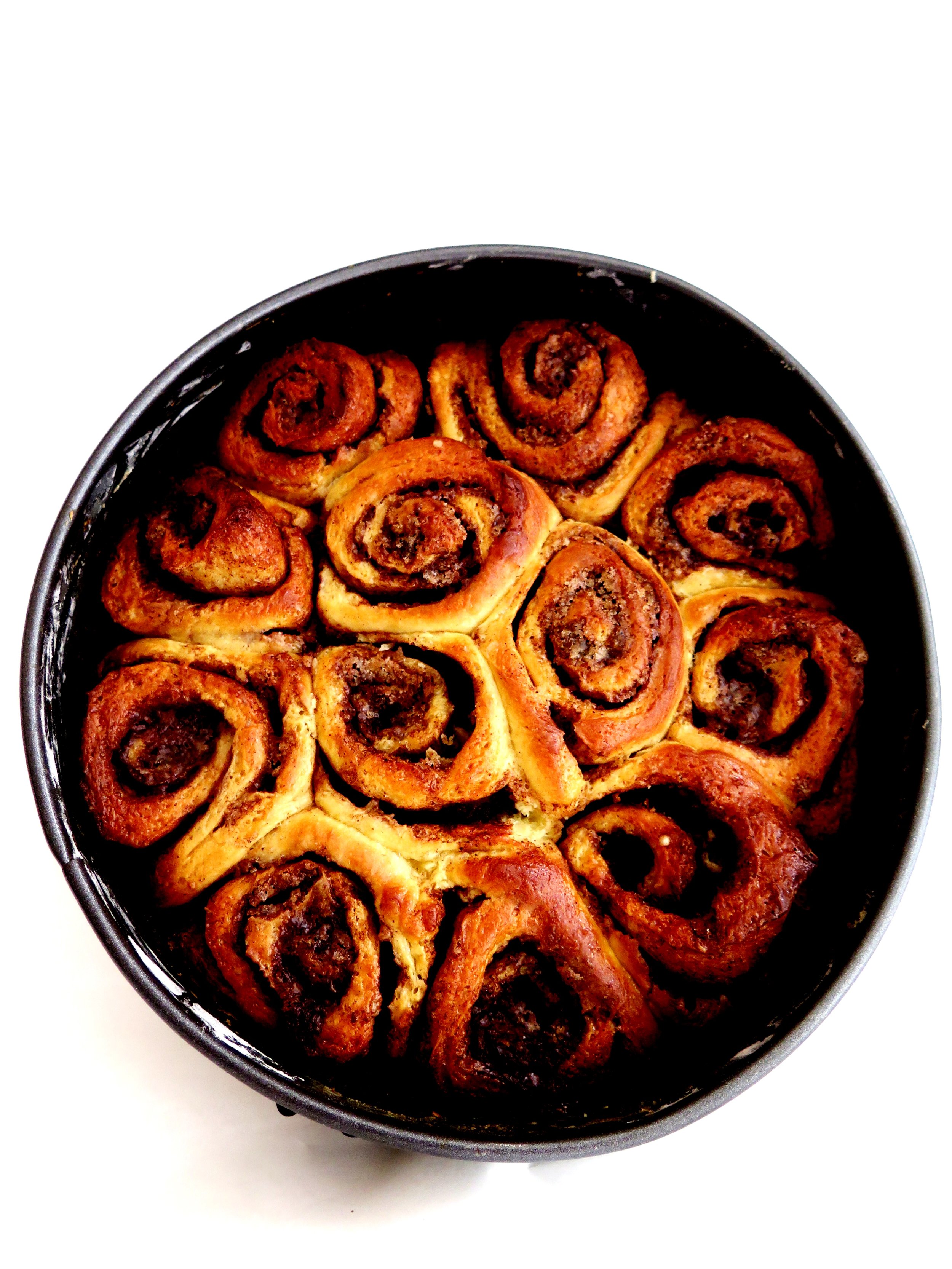 My own recipe falls somewhere in the middle of the 3 varieties. The brioche dough is soft and light on the inside and crisp on the outside, the browning of the butter in the filling adds a nutty richness, and the muscovado sugar makes the bun moister and adds greater depth of flavour than plain caster sugar. As the buns cook, the sugar cinnamon filling caramelises slightly at the base adding a moreish stickiness.
My own recipe falls somewhere in the middle of the 3 varieties. The brioche dough is soft and light on the inside and crisp on the outside, the browning of the butter in the filling adds a nutty richness, and the muscovado sugar makes the bun moister and adds greater depth of flavour than plain caster sugar. As the buns cook, the sugar cinnamon filling caramelises slightly at the base adding a moreish stickiness.
 Although the brioche dough requires starting the evening before, don’t let it stop you from making these. They are, in fact, incredibly easy and quick to make. It’s also rather lovely going to bed knowing that a cinnamon bun awaits you the next day…
Although the brioche dough requires starting the evening before, don’t let it stop you from making these. They are, in fact, incredibly easy and quick to make. It’s also rather lovely going to bed knowing that a cinnamon bun awaits you the next day…
Ingredients
Brioche
1 ½ tsp active dried yeast
3 tbsp lukewarm water
285g strong white bread flour
¾ tsp salt
40g caster sugar
3 medium sized eggs + 1 to paint the buns
115g cold unsalted butter
Cinnamon Filling
90g butter
160g light brown muscovado sugar
3 tbsp cinnamon
½ tsp salt
1 round 9 inch tin, greased and dusted with flour
Method
- In large bowl stir together yeast and water until the yeast has dissolved. Leave in a warm place for 5-10 minutes until the yeast is activated and the mixture begins to go slightly frothy.
- Add in the flour, salt, sugar and eggs and mix until thoroughly combined and the dough is smooth and sticky. If you are using a Kitchen Aid, as I do, fit it with the paddle and mix.
- Stirring continuously (or with the machine on a medium-high speed) add in the butter bit by bit, waiting until it is fully combined before adding more. Once the butter is fully combined, keep mixing until the dough is smooth and shiny. This will take about 8-10 minutes.
- Placed dough in a lightly greased bowl, cover with cling film, and place in fridge overnight or for minimum 8 hours.
- The next day make the cinnamon filling by placing the butter in a pan over a medium heat. Once it has melted, leave it on the heat for another minute until it goes golden in colour and has a rich, nutty aroma. Mix the sugar, salt and cinnamon with the butter to form a paste and set aside to cool.
- Remove the dough from the fridge and, on a board dusted with flour, roll it out to a rectangle of roughly 30cm by 38cm and to a 3/4cm thickness. Spread the cinnamon filling evenly over the rectangle.
- With long side of the rectangle closest to you (i.e. landscape as opposed to portrait), roll the dough from the long side to the other long side tightly, like a scroll. With the seam side down, slice the roll into 12 even slices. Arrange the slices spiral side up in the prepared tin, cover with a tea towel, and allow to rise for an hour in a warm place.
- Preheat the oven to 180˚C. To give the buns a beautiful golden shine, beat the egg and brush a thin layer over them.
- Place the tin in the oven and allow to bake for about 20-30 minutes until the surface is a golden brown and a skewer comes out clean. If it looks a little too dark early on in the bake, cover with tin foil. Once cooked, place on a wire rack to cool (or eat immediately).
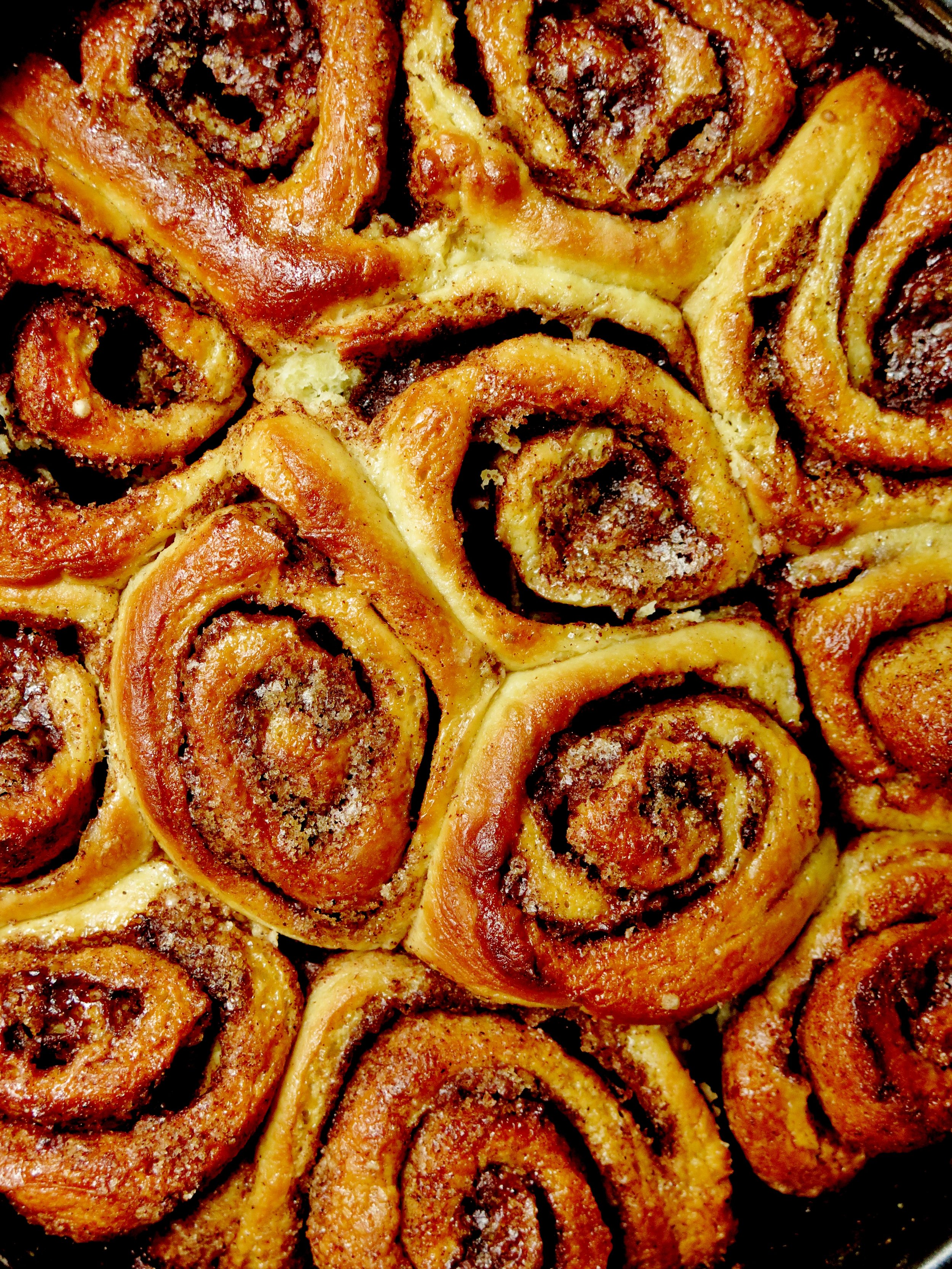
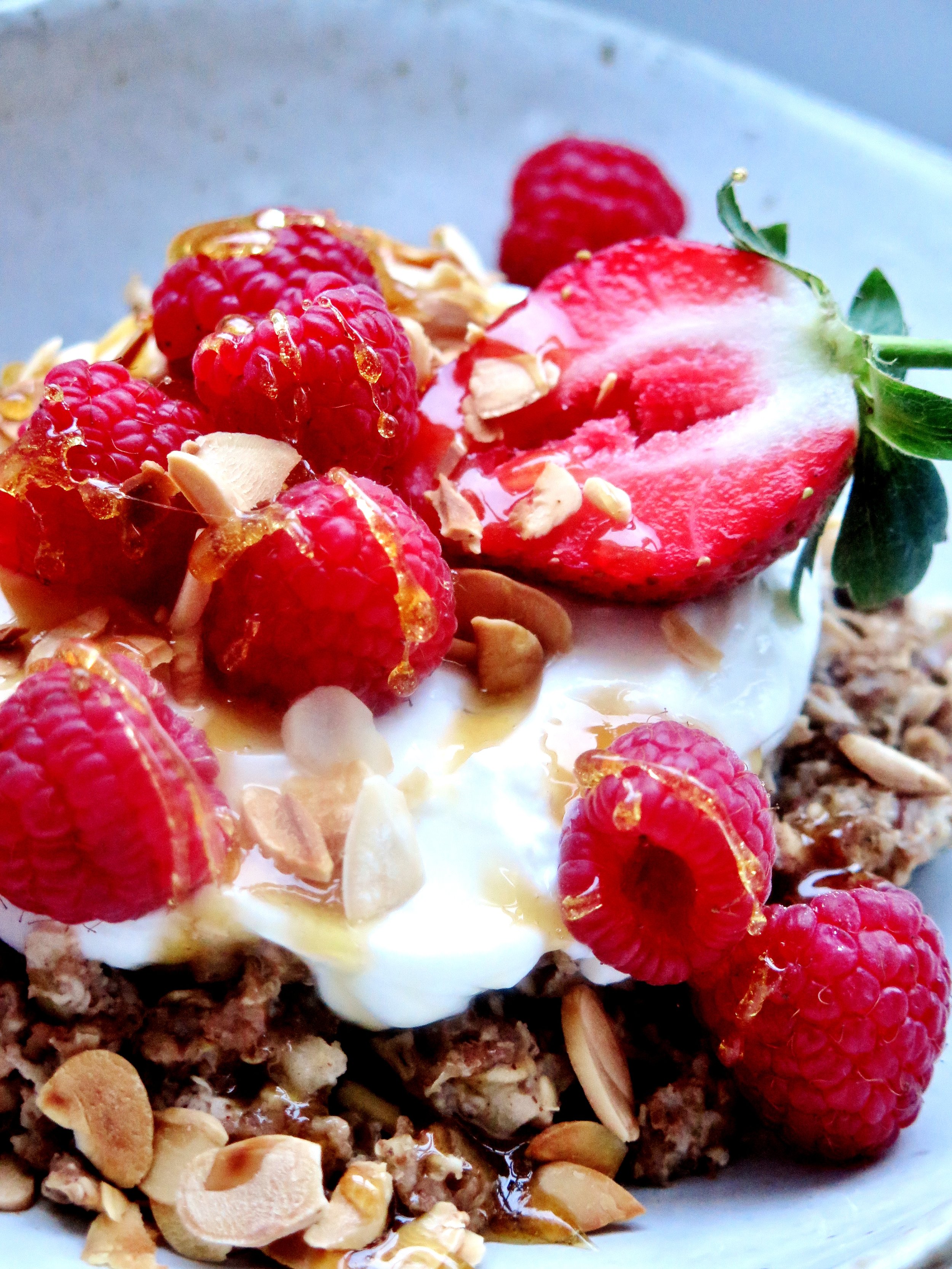 Last year I spent a week in the middle of nowhere, in freezing cold, exercising over 6 hours a day in mud/gales/snow/hail, under the supervision of ex-military trainers who pushed me physically beyond my limits until every last droplet of sweat had been purged. My fellow “bootcampers” included a fresh out of prison and rehab drug dealer/addict, a morbidly obese woman who refused to communicate with anyone, a creepy London shop owner, a z-list celebrity from a certain Chelsea based reality TV show, whose ego was undeservedly overblown, and some poor guy whose father had told him he was going on a spa retreat in Spain but despatched him instead into gruelling and bleak middle England.
Last year I spent a week in the middle of nowhere, in freezing cold, exercising over 6 hours a day in mud/gales/snow/hail, under the supervision of ex-military trainers who pushed me physically beyond my limits until every last droplet of sweat had been purged. My fellow “bootcampers” included a fresh out of prison and rehab drug dealer/addict, a morbidly obese woman who refused to communicate with anyone, a creepy London shop owner, a z-list celebrity from a certain Chelsea based reality TV show, whose ego was undeservedly overblown, and some poor guy whose father had told him he was going on a spa retreat in Spain but despatched him instead into gruelling and bleak middle England.
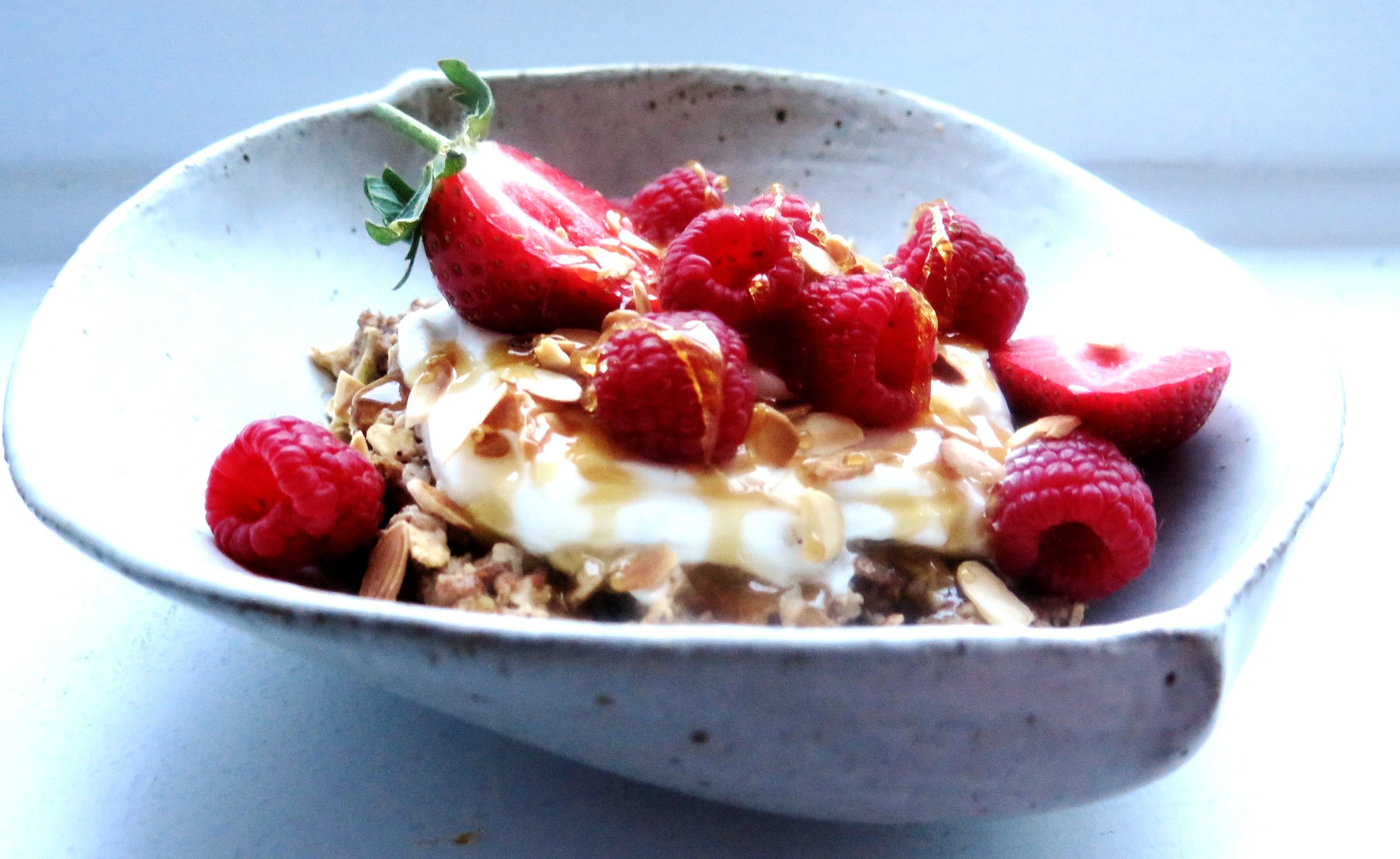
Our diet was heavily regimented, too: no sugar, no caffeine, no alcohol, and nothing processed. Despite its virtuousness, it was delicious - fresh, wholesome and innovative - all cooked by an ex-OXO Tower chef. Admittedly, food is the first thing I think of when I wake up anyway, but this feeling became intensified at the camp, especially with a 6 o’clock alarm call, and two hours of torture before breakfast. No, it wasn’t a prison camp: I did this out of choice.
It was one of the only occasions when getting chummy with the chef didn’t reap any edible perks. I did , however, manage to glean the recipe for the breakfast highlight of the week: Bircher muesli. It traditionally has a fluid consistency and is made the night before to allow the oats to become plump with apple juice and yoghurt. This one breaks all the rules but is more delicious, healthier and a hundred times more convenient – most people (excluding me) spare little thought for breakfast, let alone prepare for it the night before.
This recipe is dairy-free and sugar-free simply because I think it’s delicious that way, but feel free to use dairy equivalents, and add some maple syrup if you’re that way inclined – it works equally well. It can also be made gluten-free – just use the appropriate muesli brand.
Ingredients (serves 2)
Muesli
2 cups sugar-free muesli
1 Braeburn apple, grated and sprinkled with 1 tsp lemon juice (this will prevent it oxidising and going brown)
¼ tsp vanilla bean paste
1 tsp cinnamon
¼ cup coconut yoghurt (or Greek yoghurt)
3 tbsp coconut milk (or dairy)
2 tbsp apple juice
(1 tbsp maple syrup – optional)
Topping
¼ cup coconut yoghurt
100g raspberries
A handful of strawberries
2 tbsp flaked almonds, toasted in a dry pan over a medium heat for a few minutes until pale brown
Method
- Stir together all topping ingredients. It should be of a thick consistency but feel free to add another splash of coconut milk if you prefer. Leave for 10 minutes to allow the muesli to absorb the flavours.
- Top with yoghurt, and scatter with berries and flaked almonds. Drizzle with maple syrup if you like.
Moist, juicy, dense, fruity, this is the queen of all carrot cakes. I have now abandoned all previous carrot cake recipes in favour of this one
.
Ingredients
Cake
4 large eggs
350g caster sugar
225ml vegetable oil (or any other flavourless oil)
1 tbsp vanilla extract
300g plain flour
2 tsp baking powder
2 tsp bicarbonate of soda
2 tsp cinnamon
½ tsp salt
500g carrots, peeled and grated (about 5 carrots)
200g pineapple chopped roughly into 1cm cubes, and 2 tbsp fresh pineapple juice (you can squeeze it yourself)
zest of 1 orange
juice of ½ orange
100g walnuts, toasted and roughly chopped
2 x 20cm round tins, buttered and with base lined with baking parchment
Icing
200g butter, at room temperature
500g full-fat cream cheese, at room temperature
200g icing sugar, sieved
Method
Cake
- Preheat oven to 170˚C.
- In a large bowl, whisk together eggs and sugar until smooth, resembling a thin custard. Whisk in oil and vanilla extract.
- In a separate bowl, sieve together flour, baking powder, bicarbonate of soda, cinnamon and salt. Gently fold these dry ingredients into the egg mixture.
- Stir grated carrots, chopped pineapple, pineapple juice, orange zest, orange juice and chopped walnuts into the mixture. Divide mixture between the tins and place in middle of the oven to bake for 40-50 minutes until a skewer comes out clean.
- Allow to cook on a wire rack, then wrap in tin foil/cling film and place in fridge overnight. This is to aid the icing process. If you don’t have the luxury of time, place cakes in the freezer for half an hour before icing.
Icing
- Beat the butter in the bowl of a stand mixer until soft, creamy and shiny. Add in cream cheese and sieved icing sugar and continue beating until completely smooth. If the mixture is of an almost runny consistency, place in fridge for half an hour.
- Sandwich the two cakes together using a quarter of the mixture. Use the rest to coat the top and sides. Chill in the fridge before serving. Keeps well for several days in the fridge.
Adapted from Gail’s Artisan Bakery Cookbook
 This citrus syrup soaked almond cake takes me back to the Jemaa el-Fnaa, the central square of Marrakesh: the teeth pullers ready to pounce with their pliers, the snake charmers forcing a writhing snake scarf on your neck, and amongst this the orange juice vendors lined up, the citrus scents suffusing the air…
This citrus syrup soaked almond cake takes me back to the Jemaa el-Fnaa, the central square of Marrakesh: the teeth pullers ready to pounce with their pliers, the snake charmers forcing a writhing snake scarf on your neck, and amongst this the orange juice vendors lined up, the citrus scents suffusing the air…
Incredibly easy and quick to make, this cake will last for several weeks if kept in a sealed container.
It can be made gluten free simply by using gluten-free bread crumbs.
The candied orange topping is optional.
Ingredients
Cake
50g stale/toasted white bread crumbs (gluten free can be used)
175g caster sugar
100g ground almonds
1 ½ tsp baking powder
200ml vegetable oil
4 eggs
Finely grated zest of 3 medium /2 large unwaxed oranges
Finely grated zest of 2 unwaxed lemons
1 tsp cinnamon (optional)
½ tsp vanilla extract
¼ tsp salt
Citrus syrup
Juice of 2 oranges
Juice of 1 ½ lemons
75g sugar
6 cloves
1 cinnamon stick
Optional Candied Orange
1 cup water
½ cup caster sugar
2 small unwaxed oranges sliced across the diameter 2mm thick
20cm diameter tin, lined with baking parchment
Method
Cake
- In a large bowl whisk together oil, eggs and orange and lemon zest until combined.
- In a separate large bowl mix all dry ingredients together.
- Pour wet mixture into dry and stir until combined. Pour into lined tin and place in cold oven & turn heat to 180˚C.
- Bake for 40-50 minutes or until skewer comes out clean.
Citrus syrup
- While cake is cooking pour all ingredients into pan & place on medium high heat. Stir until sugar has dissolved then let it simmer for 4 minutes until it has reduced slightly to a thin, non-viscose syrup.
- As soon as the cake is removed the oven stab it all-over with a skewer , don’t hold back. Pour the syrup over. It may initially look like it’s drowning, but it will rapidly be absorbed.
- Serve when cool.
Optional candied orange layer
- In a large frying pan stir together sugar and water until sugar has dissolved.
- simmer for 3 minutes then add orange slices. Don’t worry if they overlap.
- Simmer on medium-low heat for 15 minutes, or until the skin of the orange is translucent.
- Arrange as desired.
(recipe influenced by Sophie Grigson)

